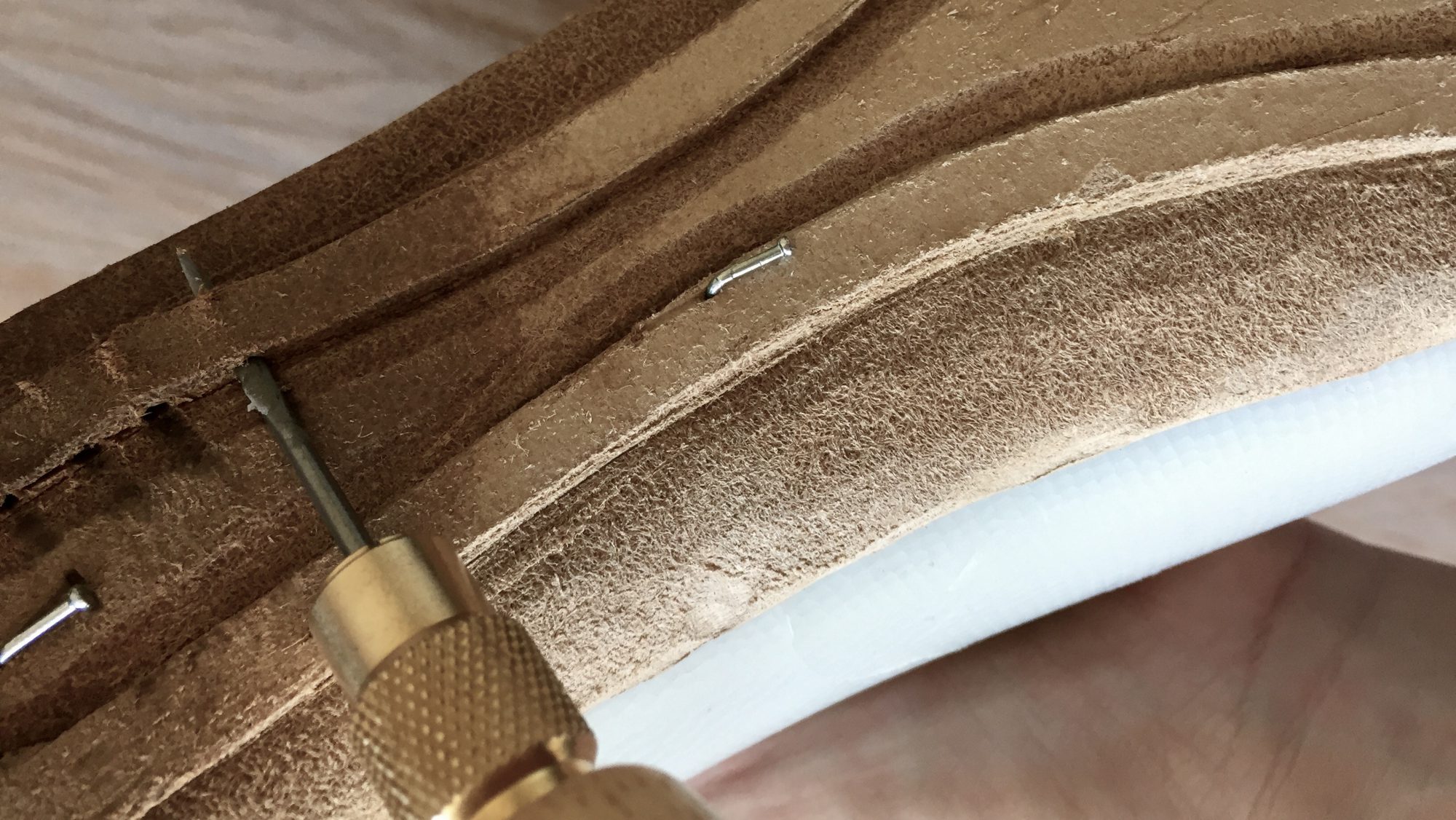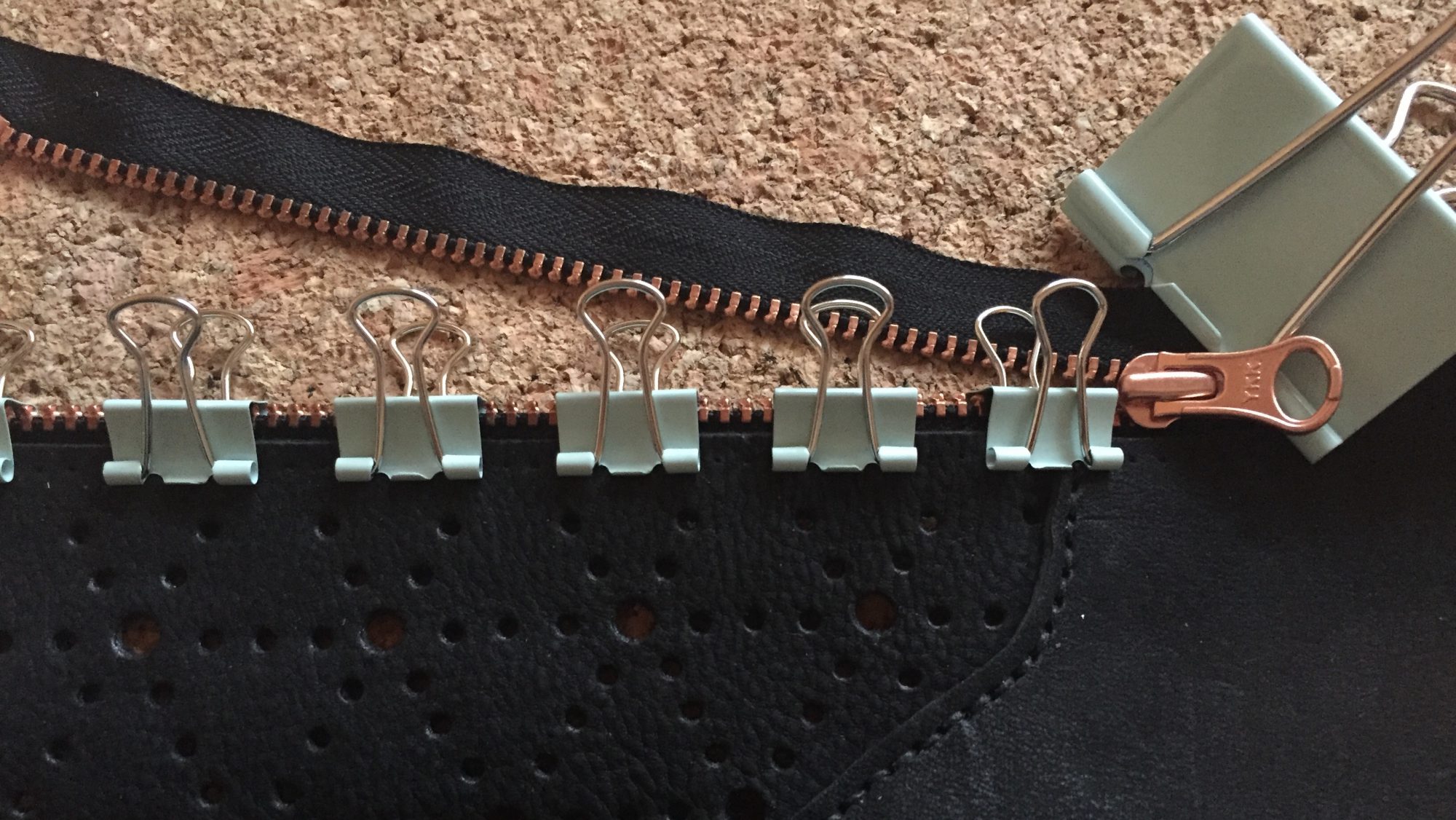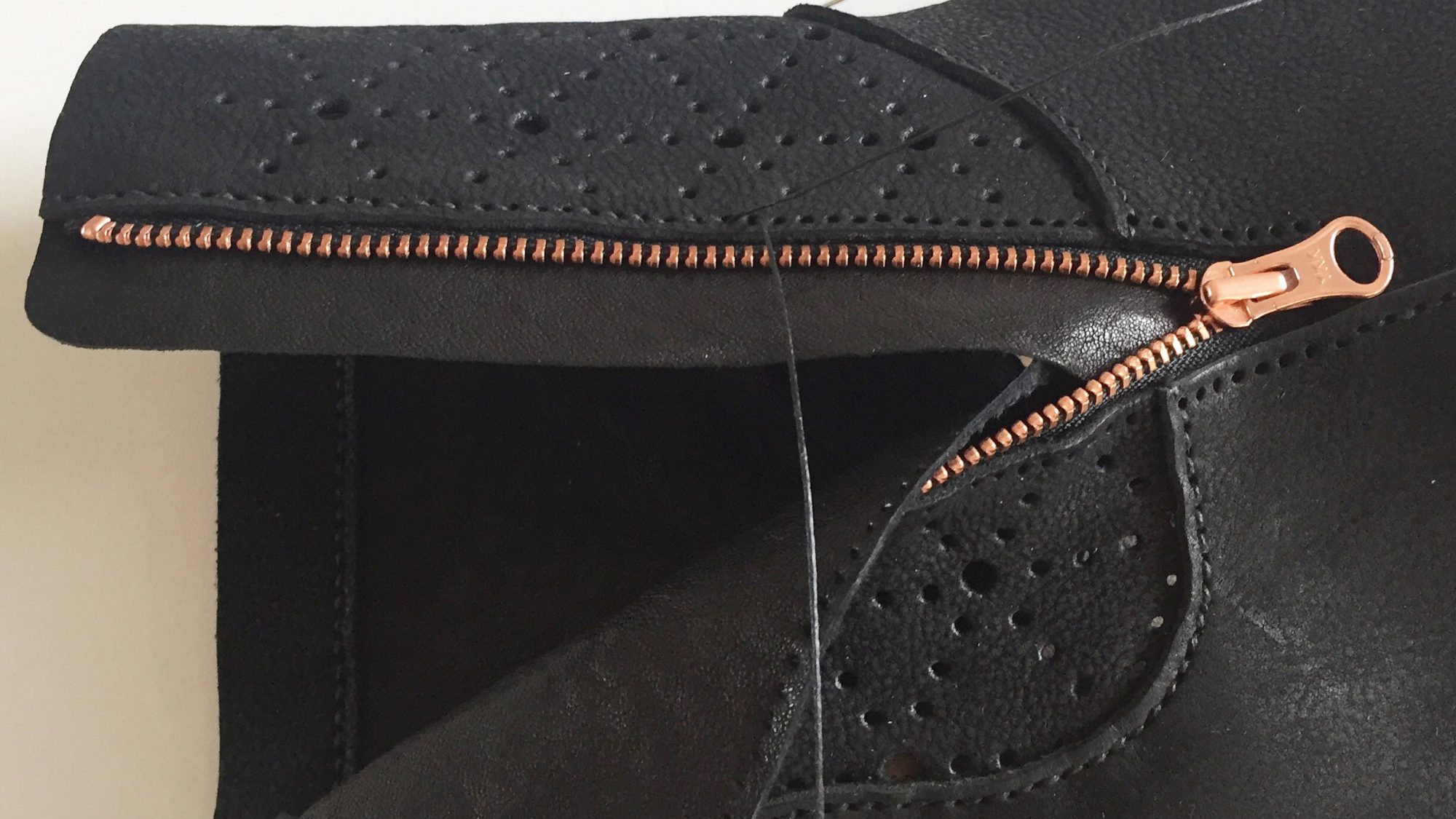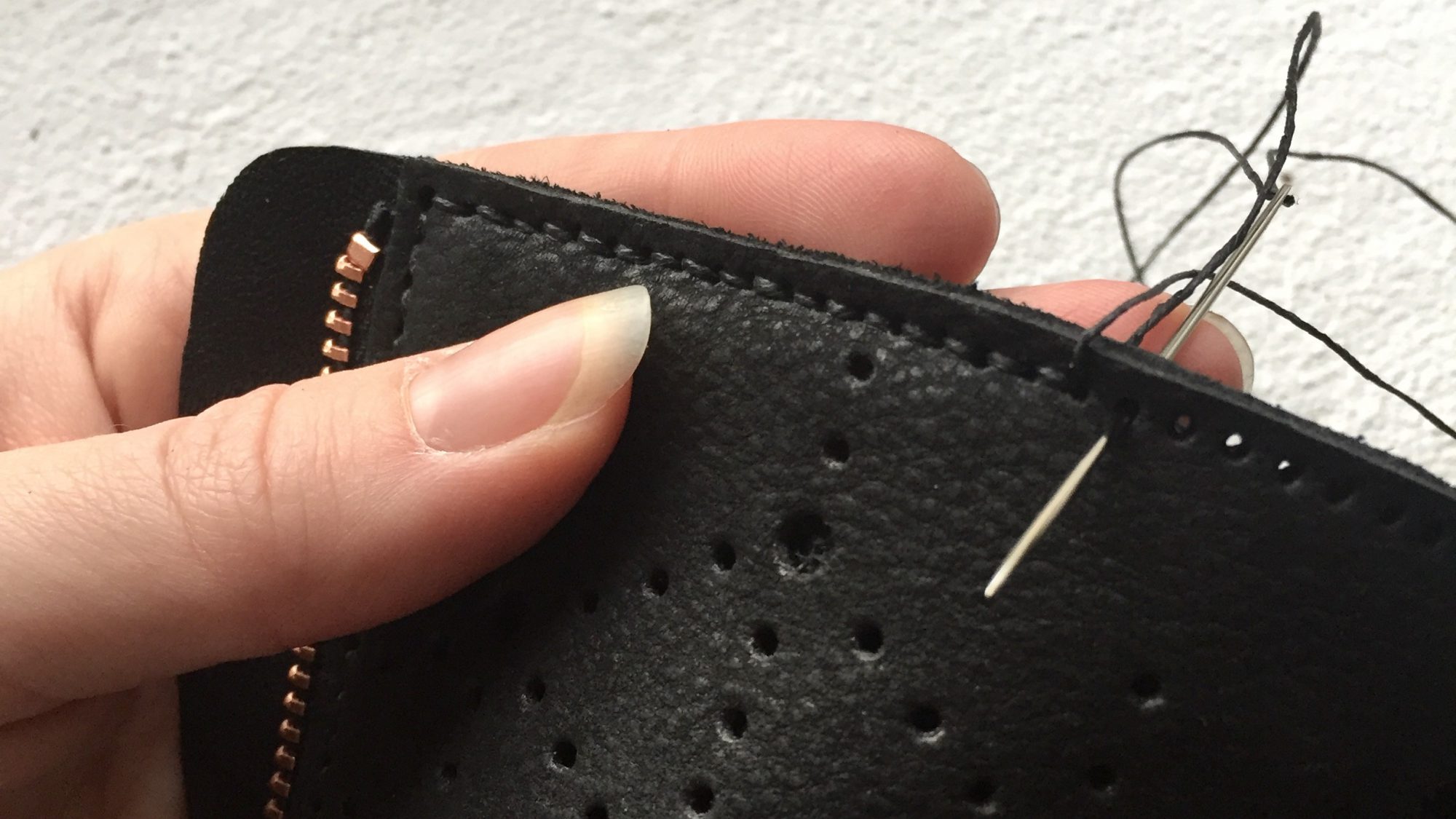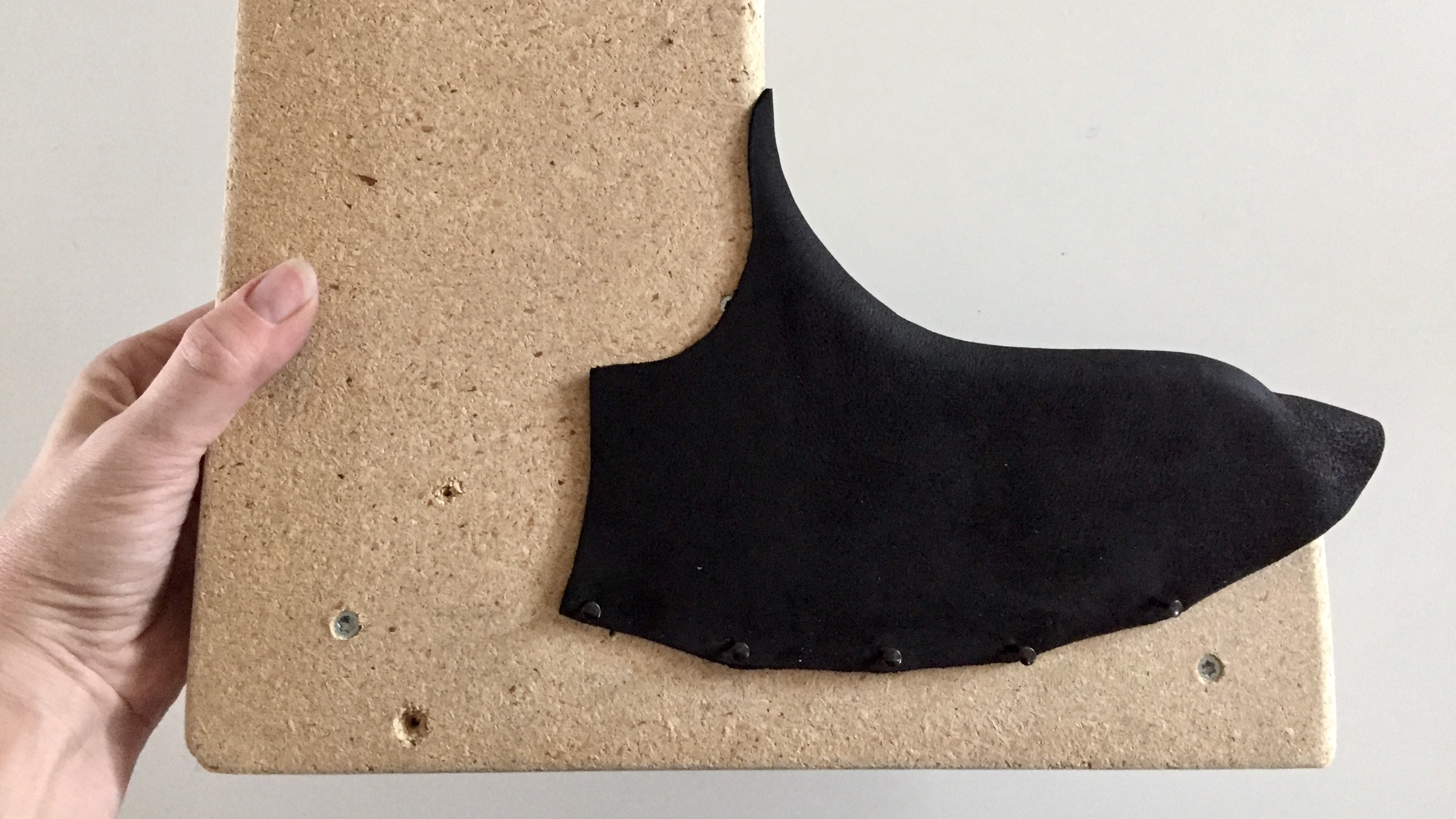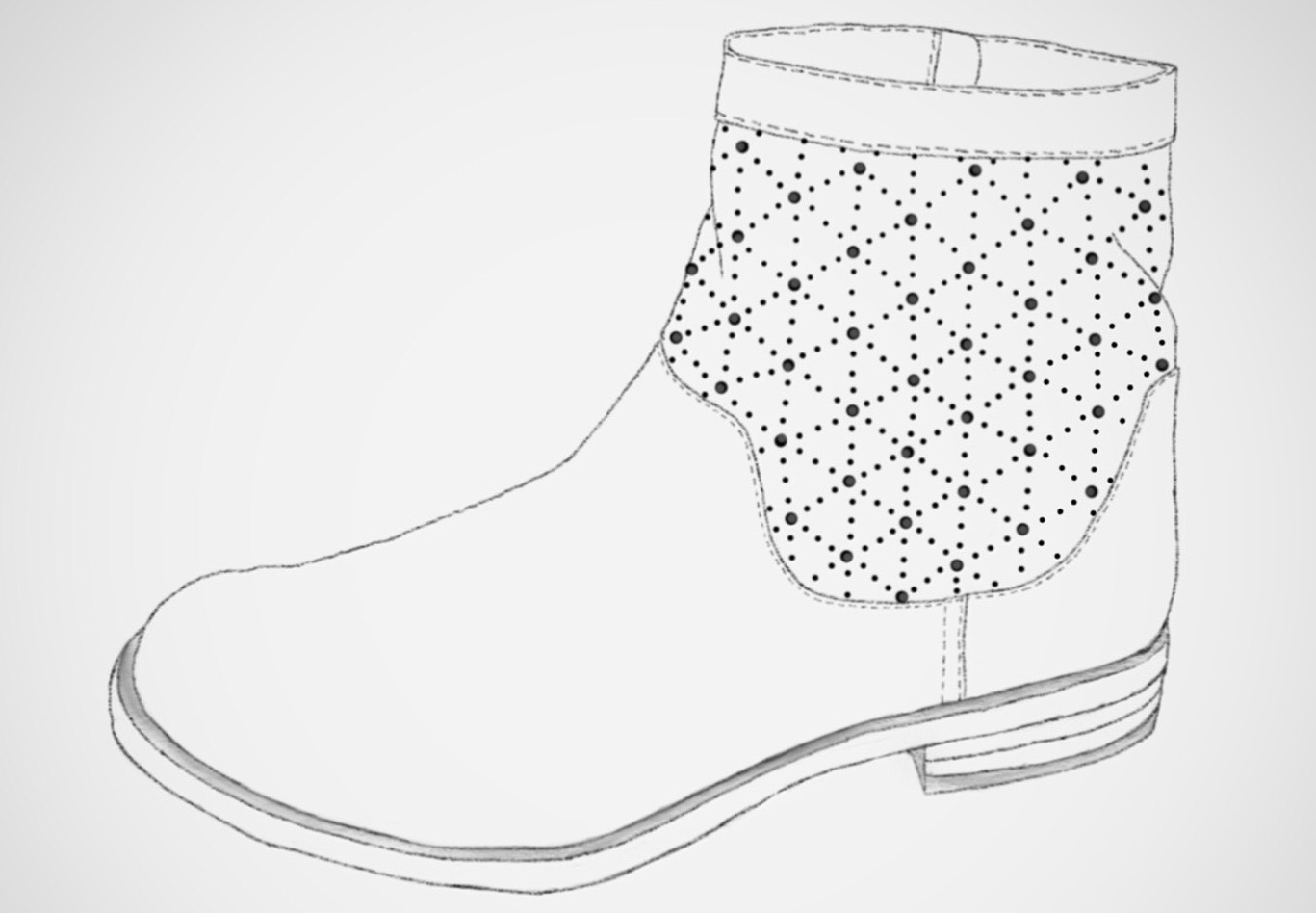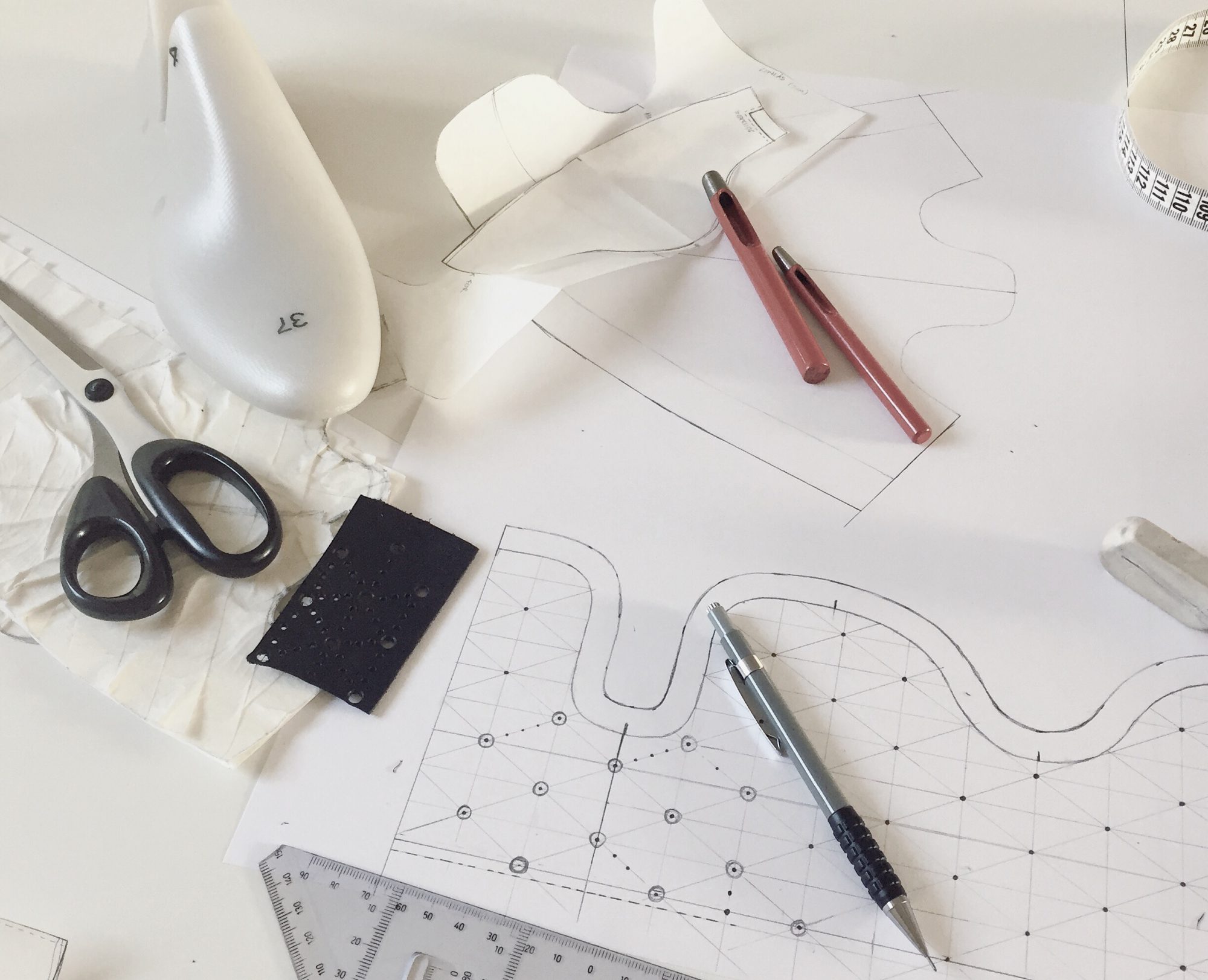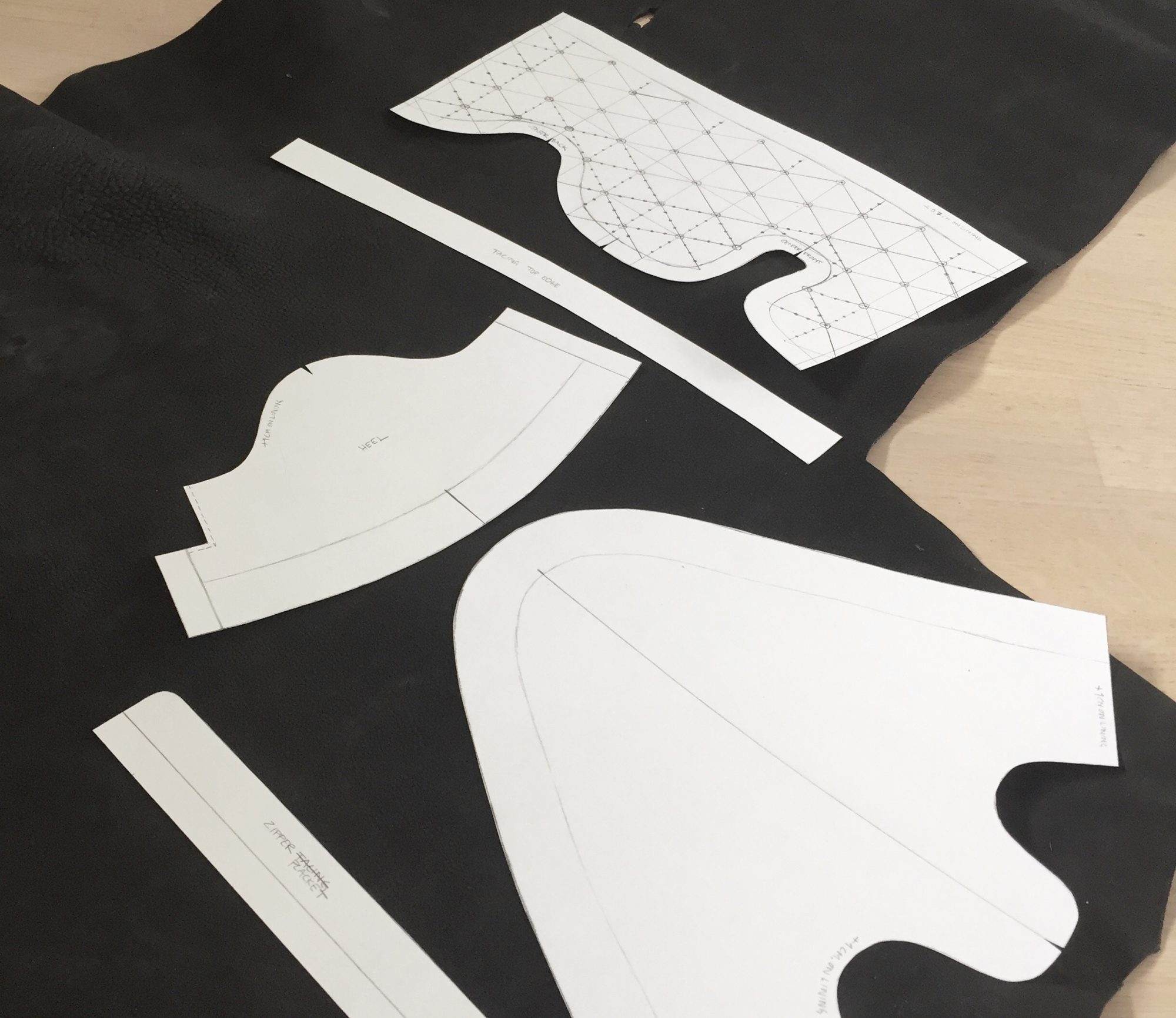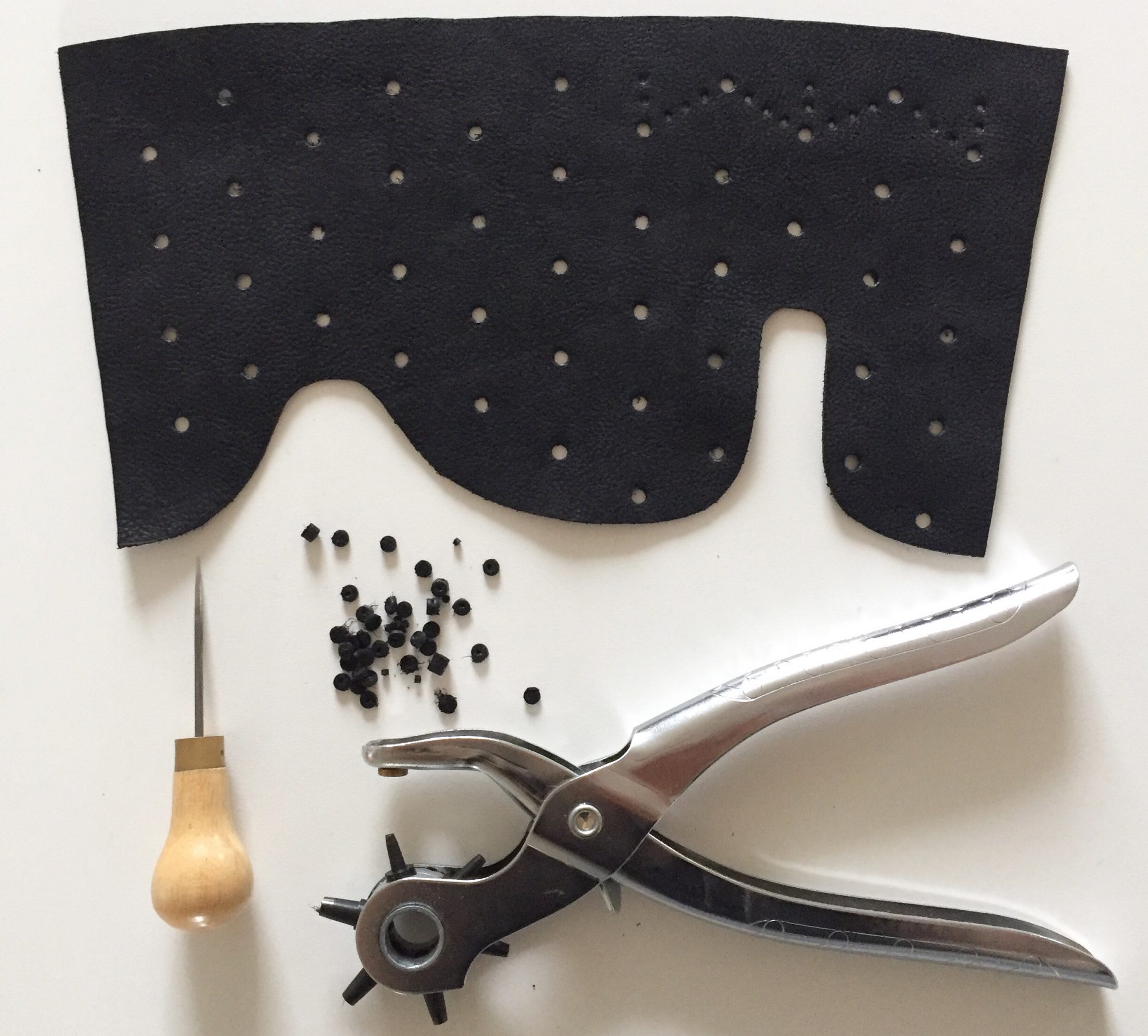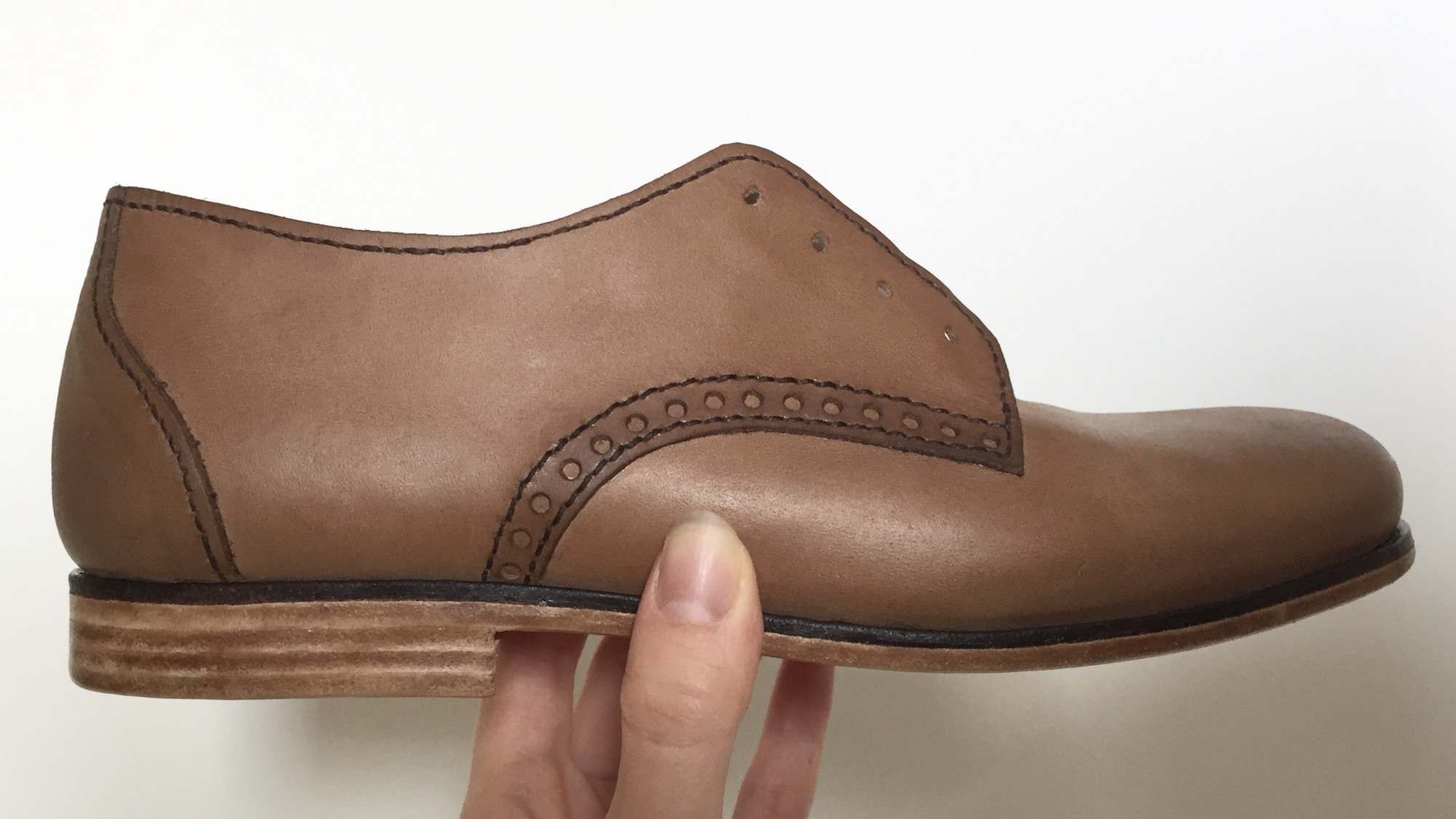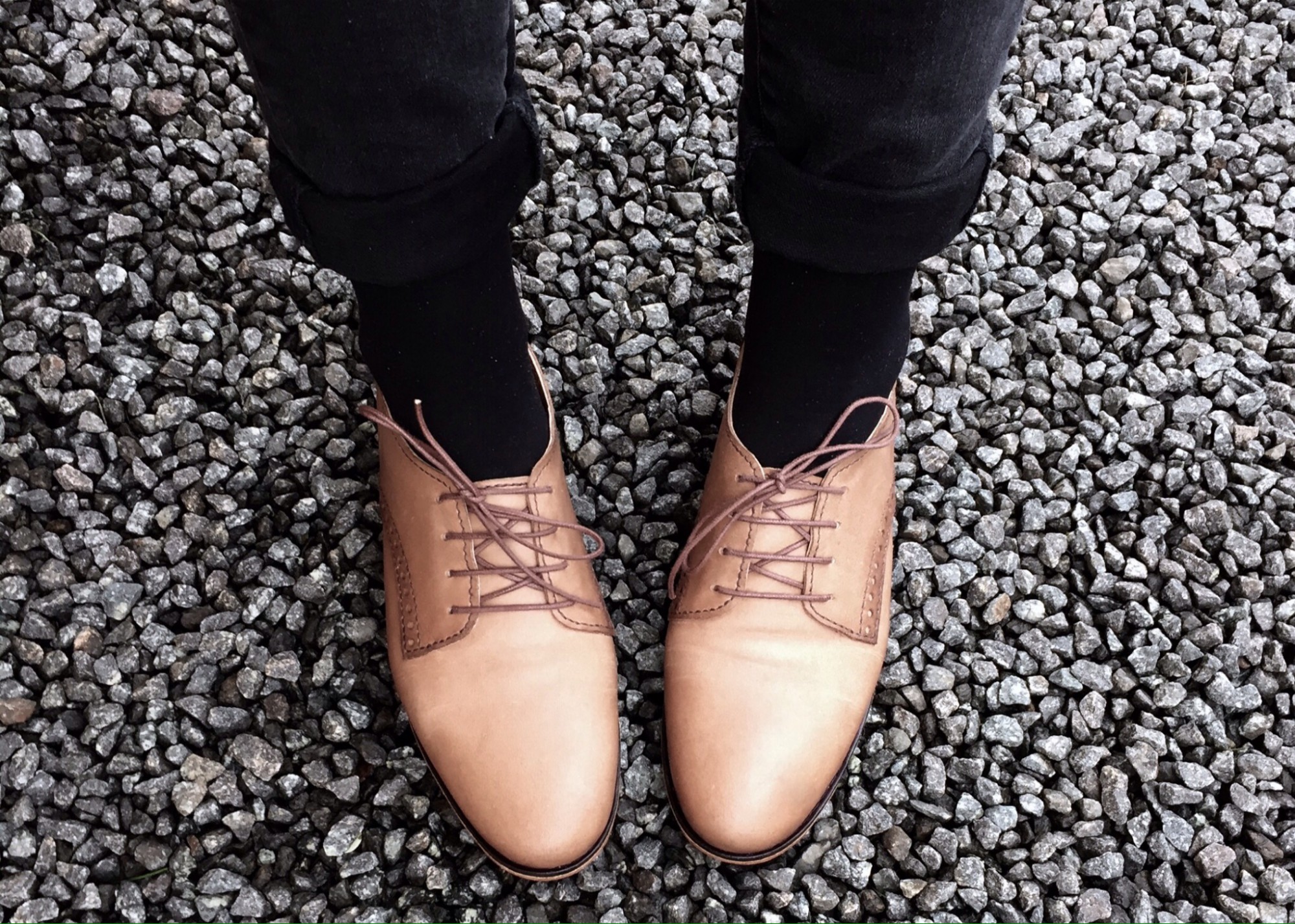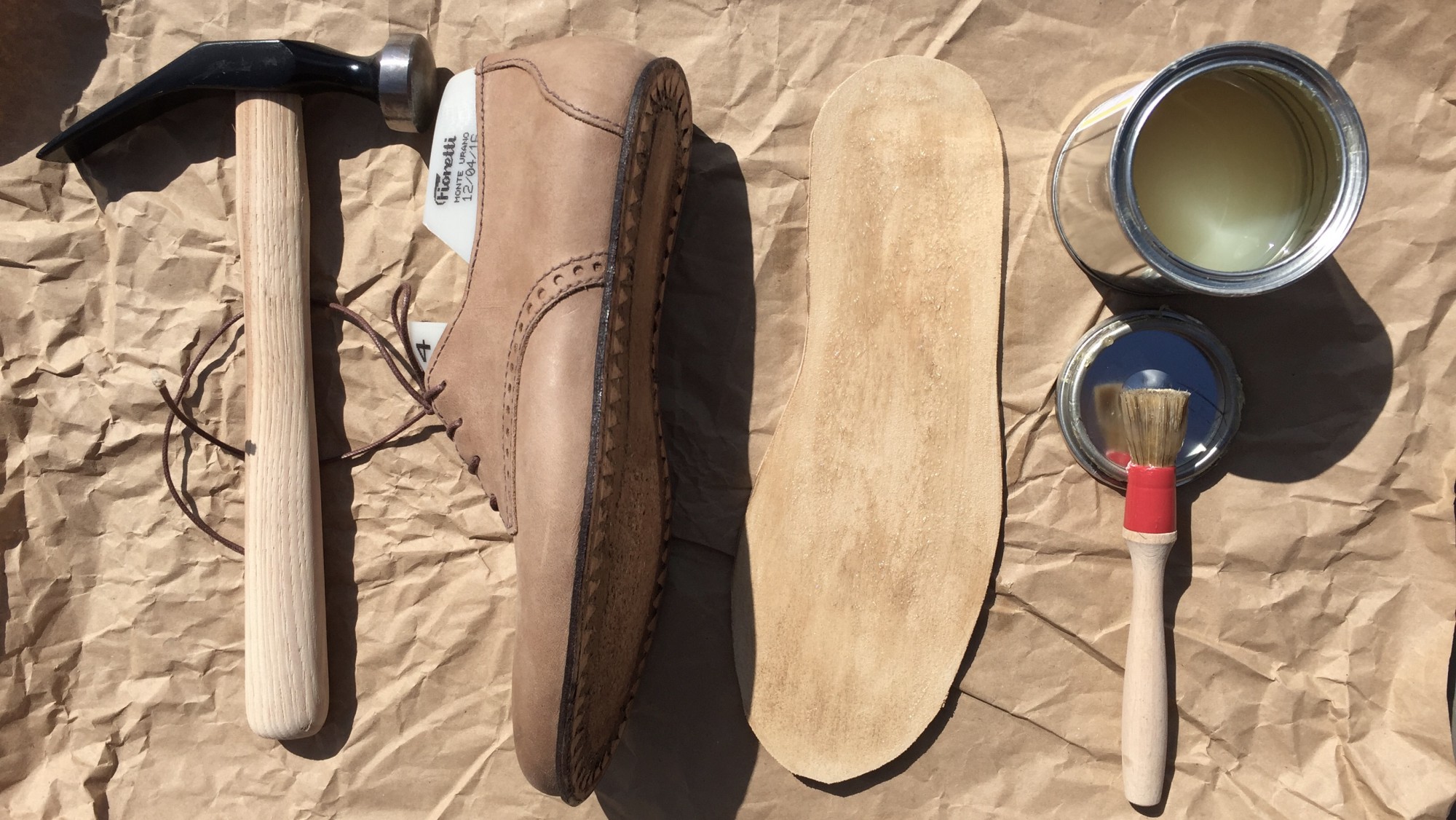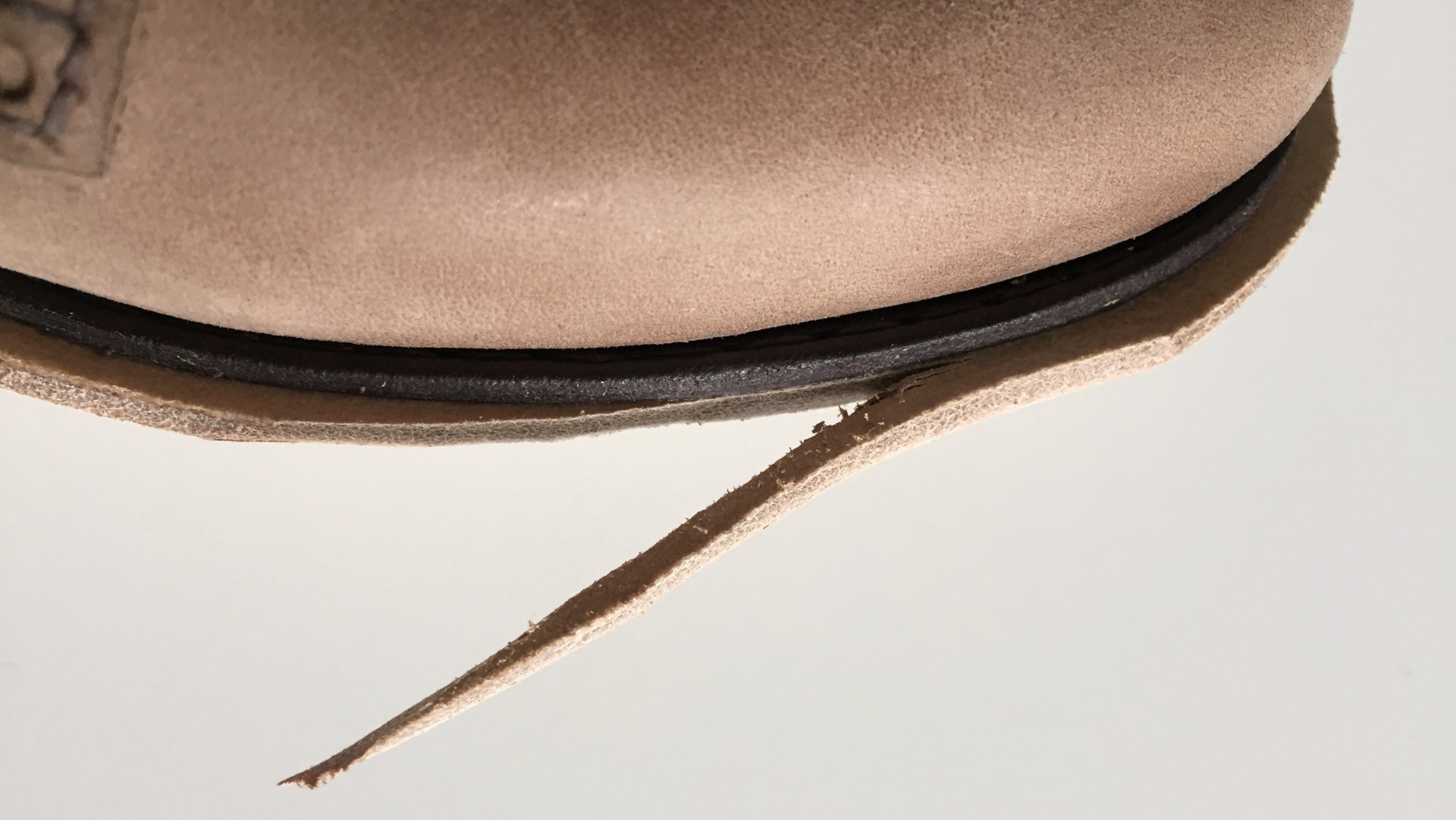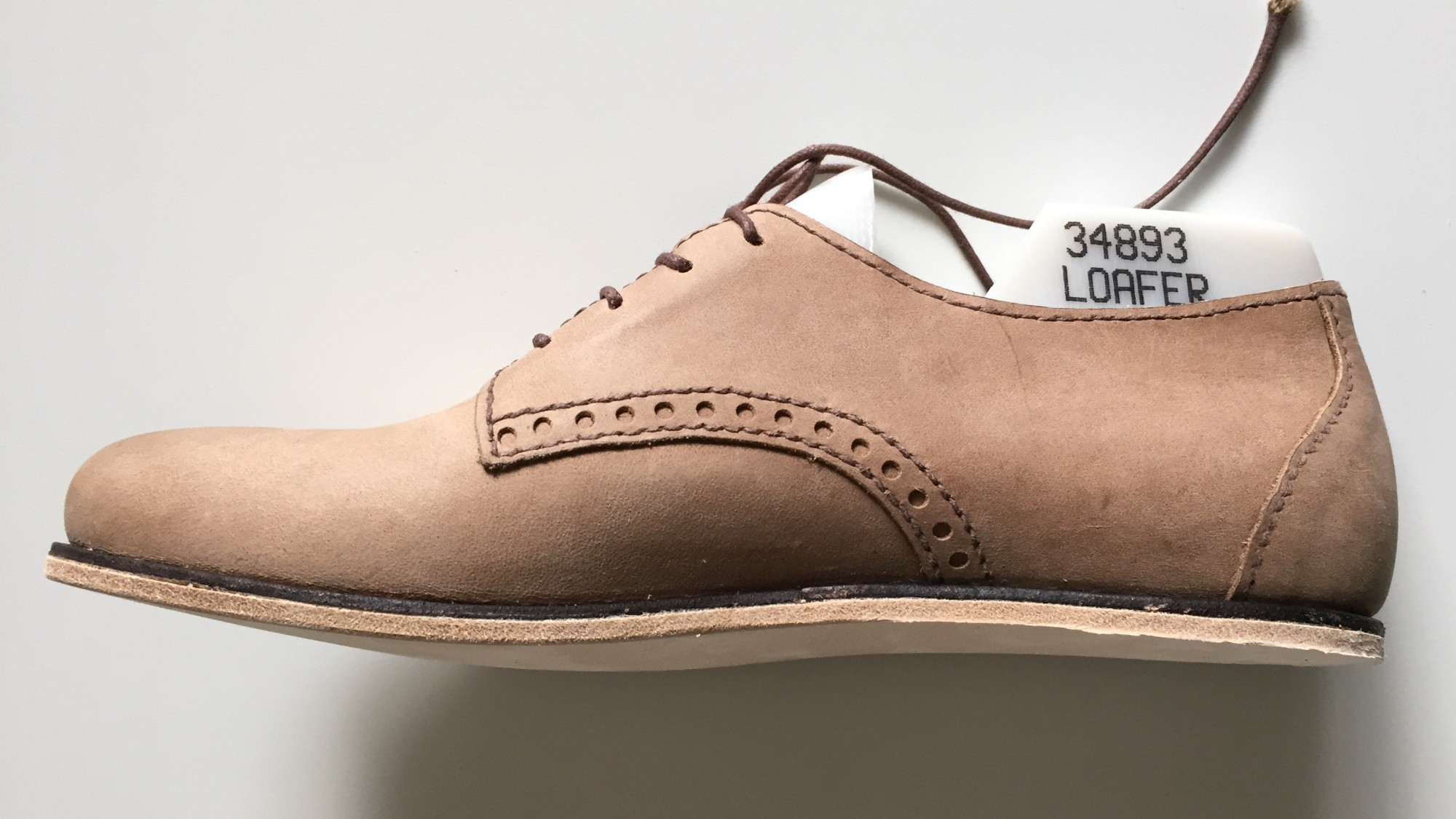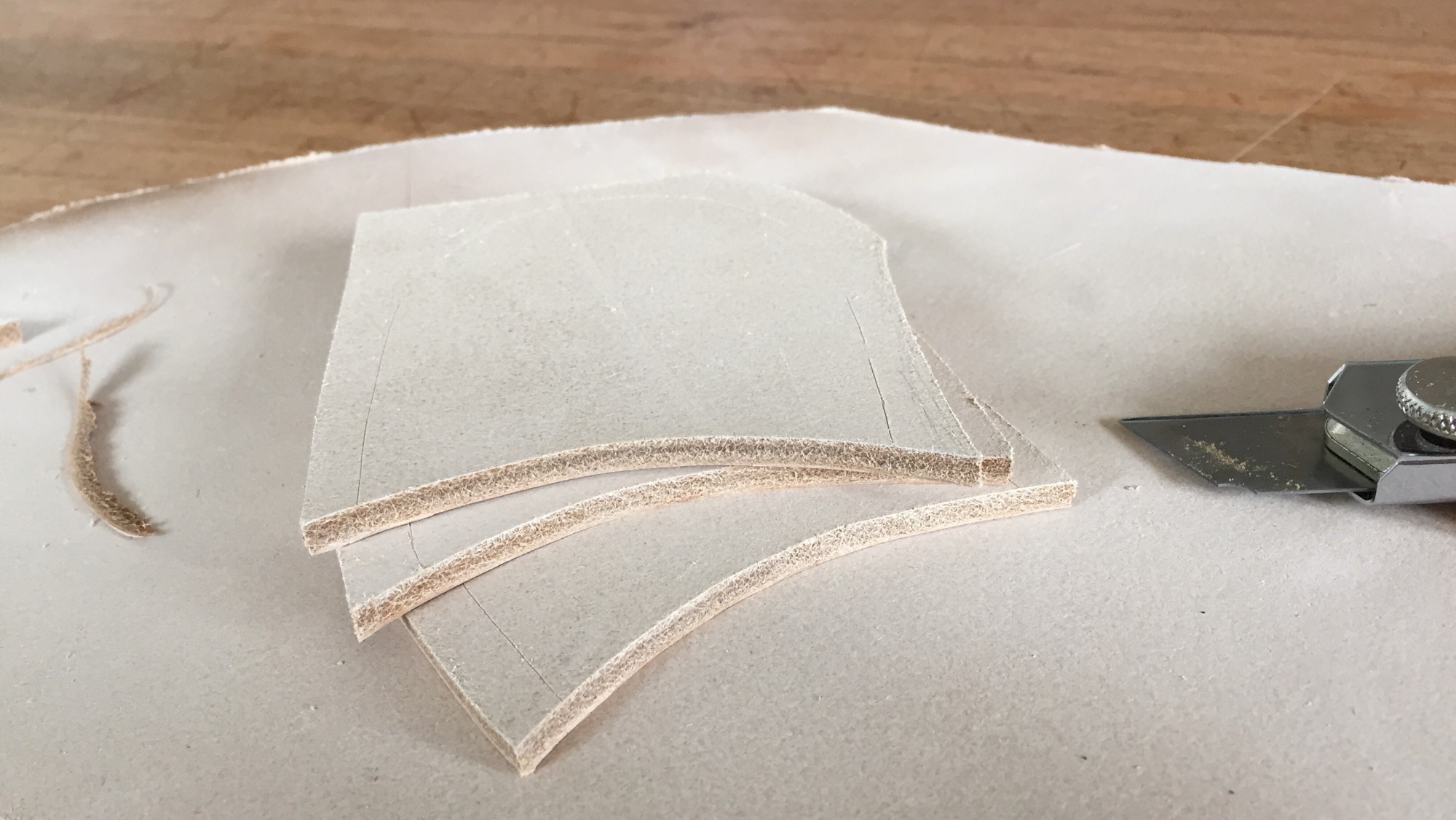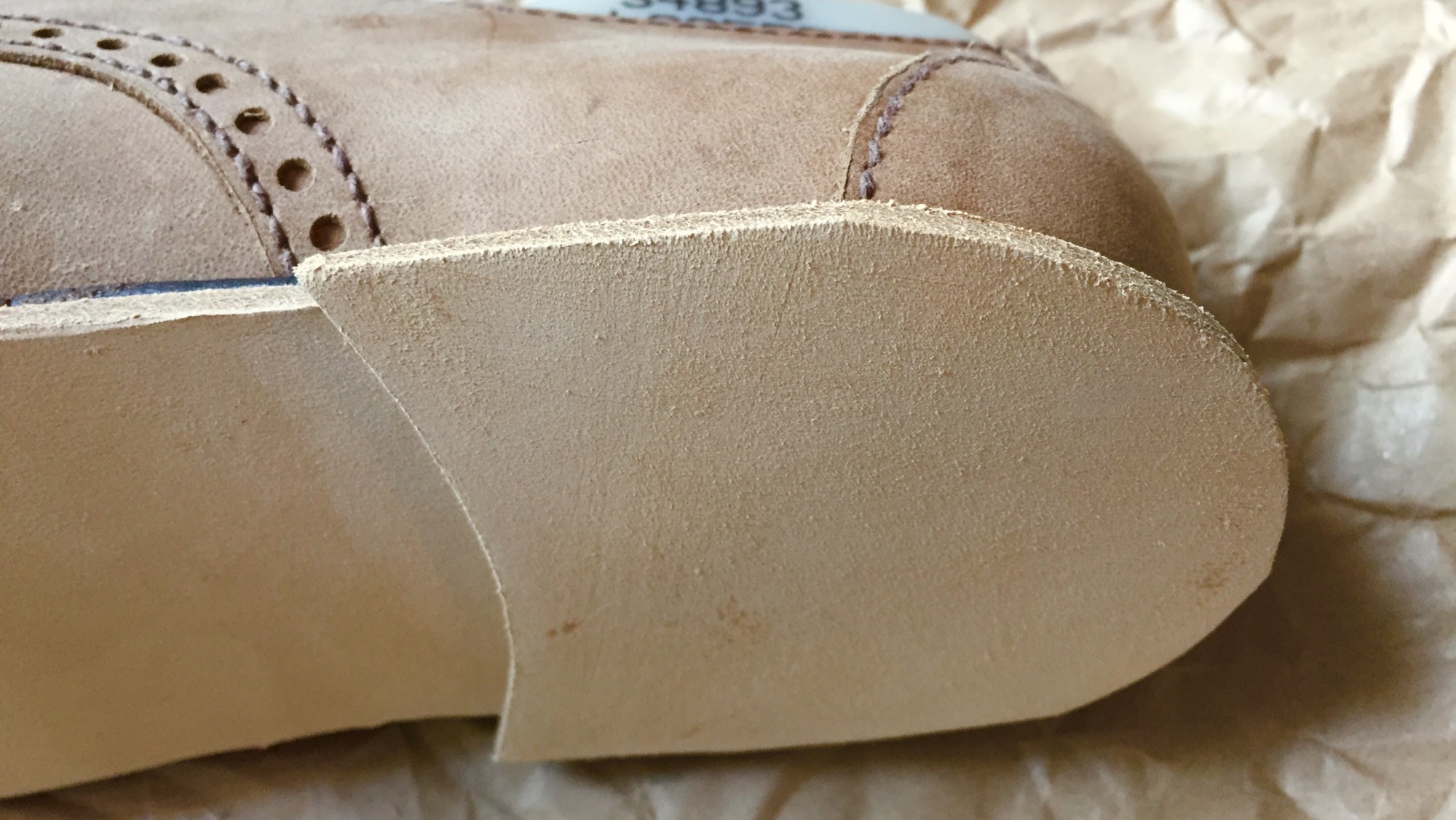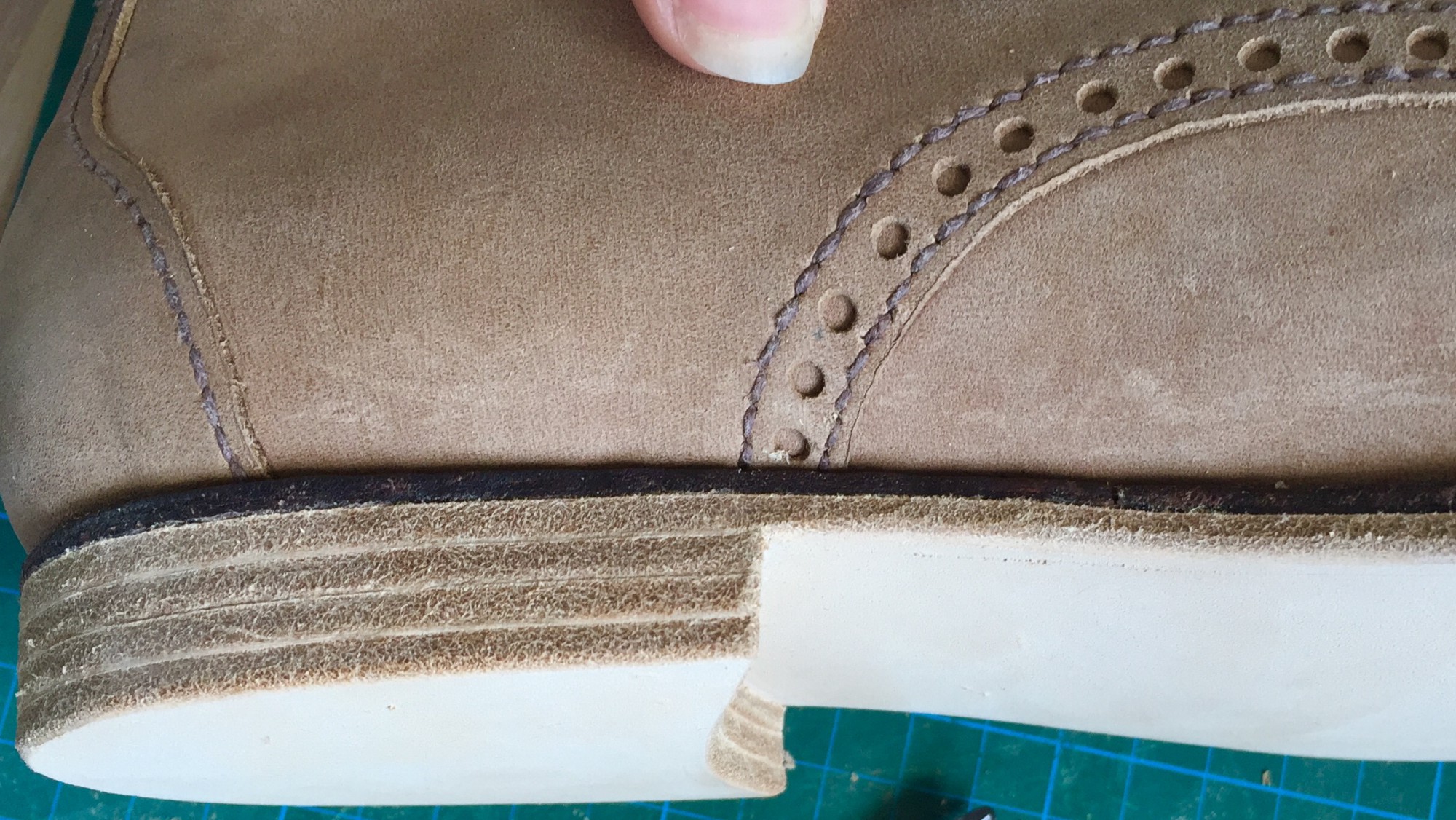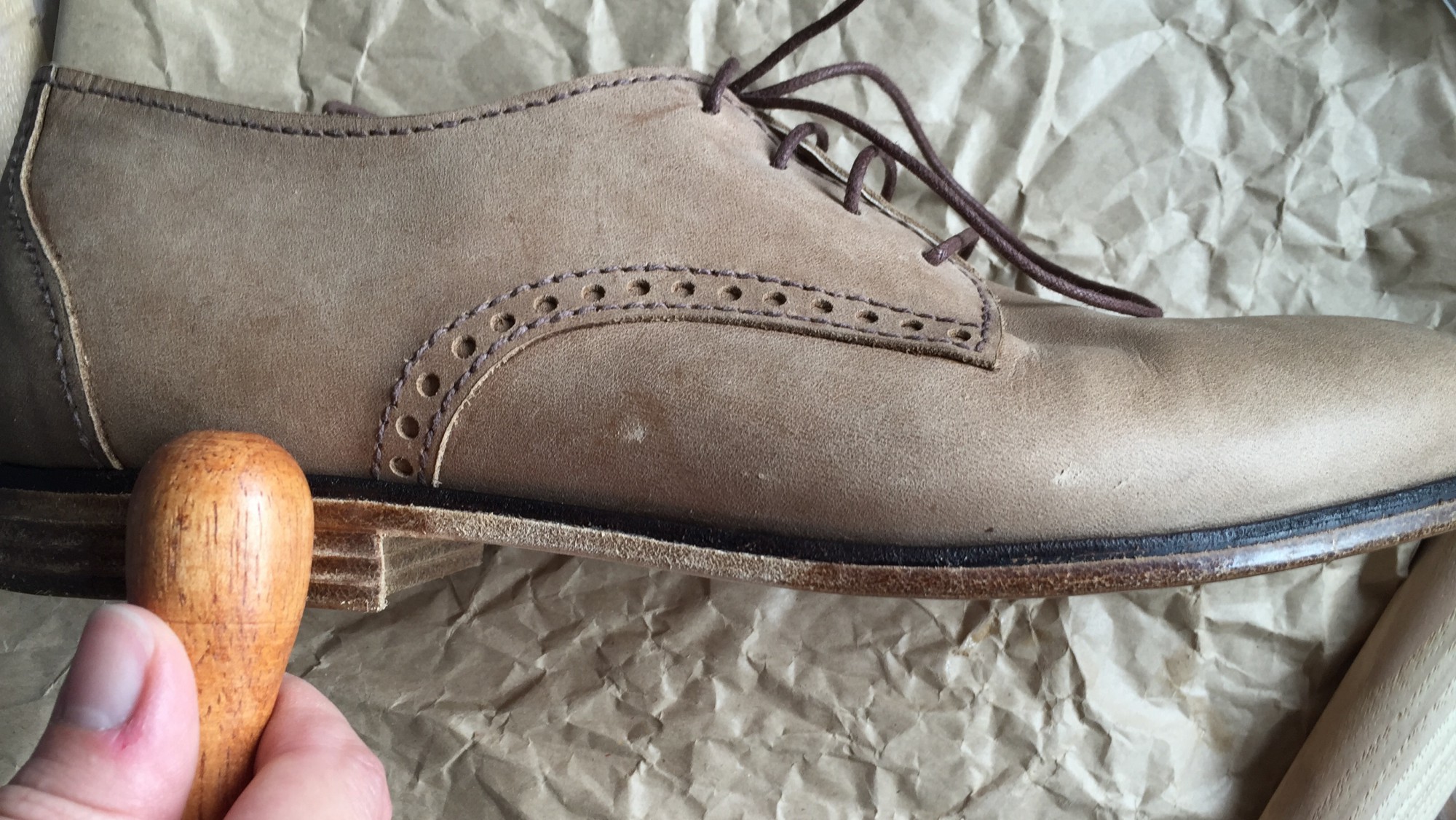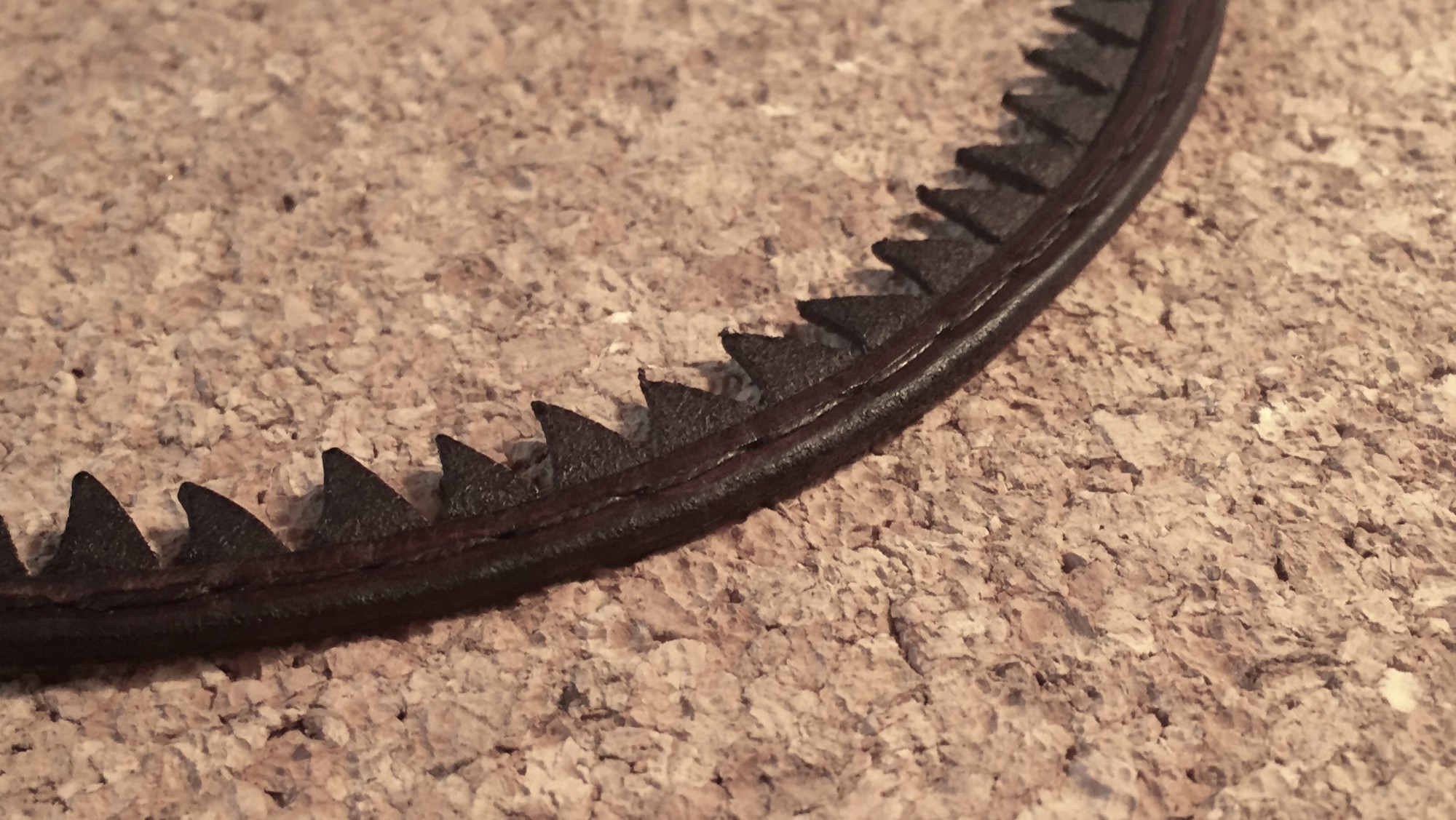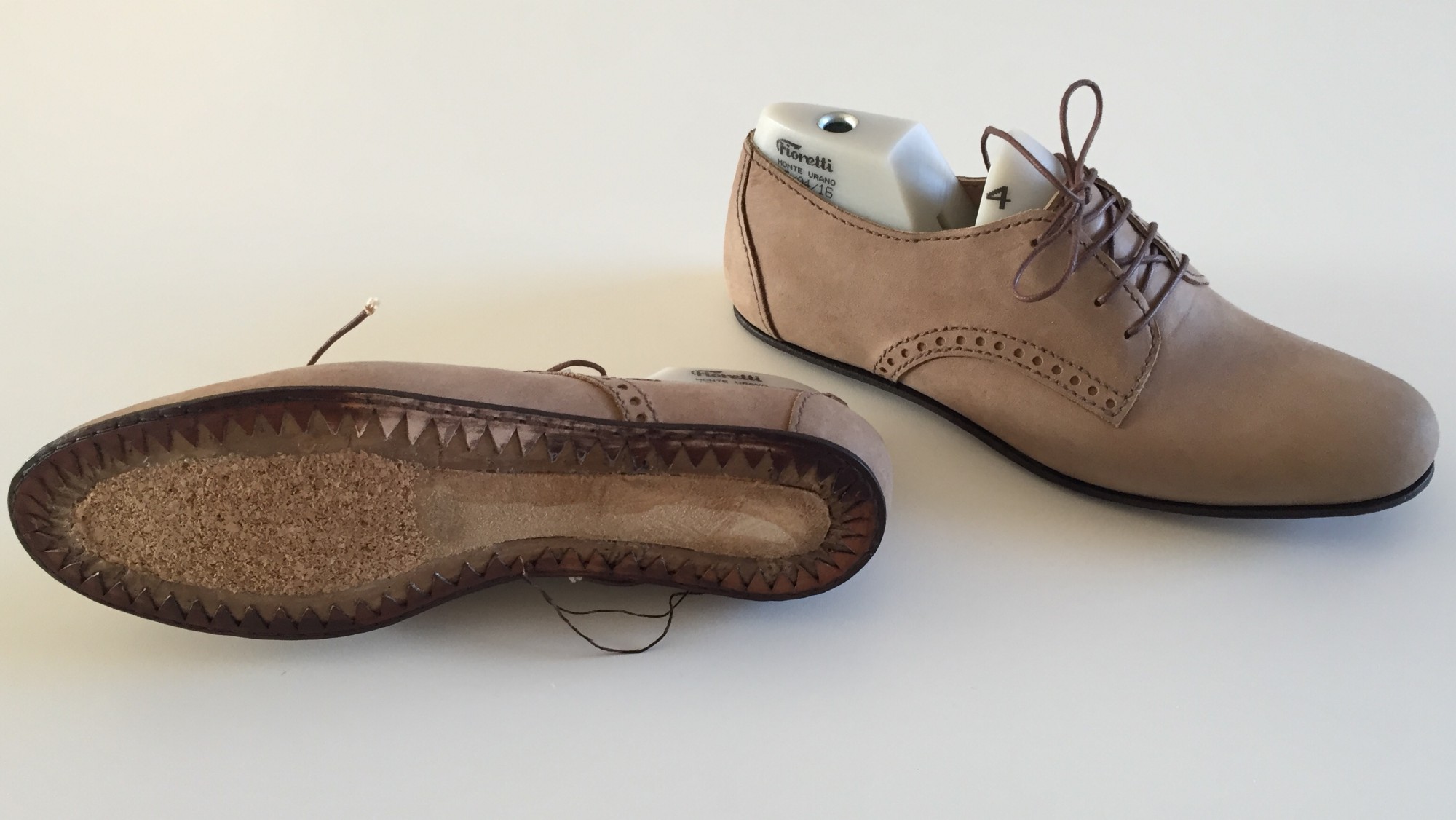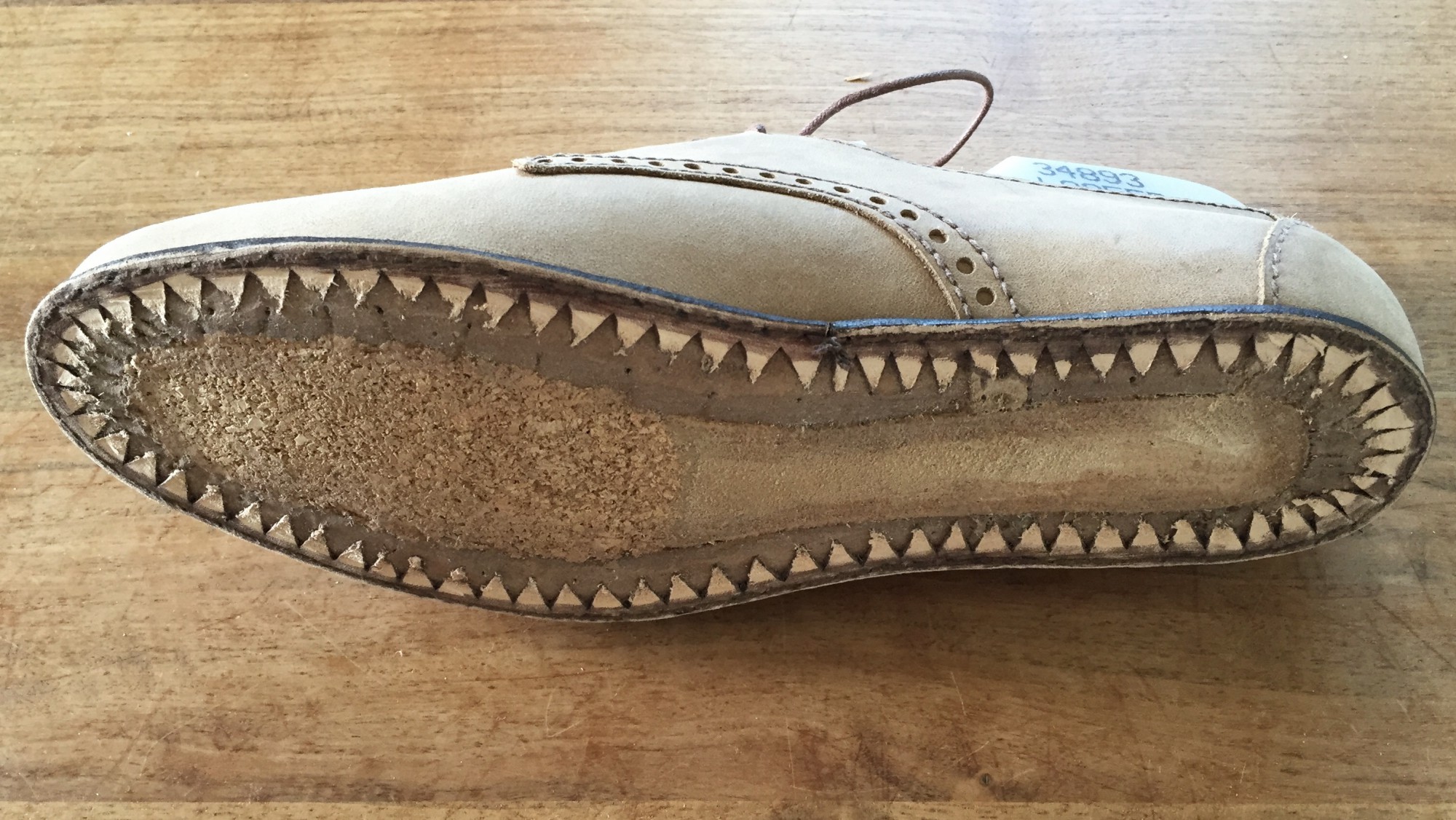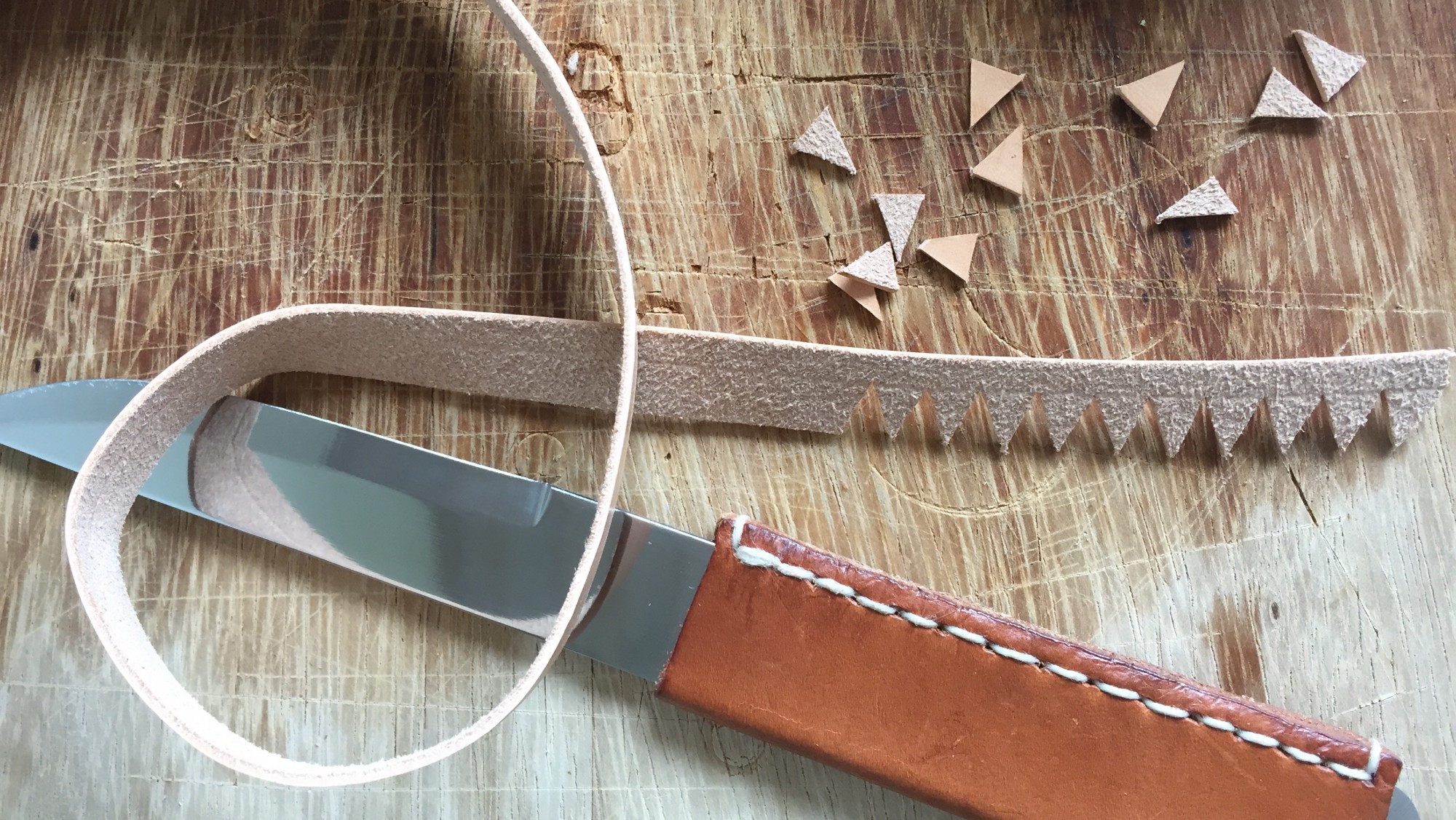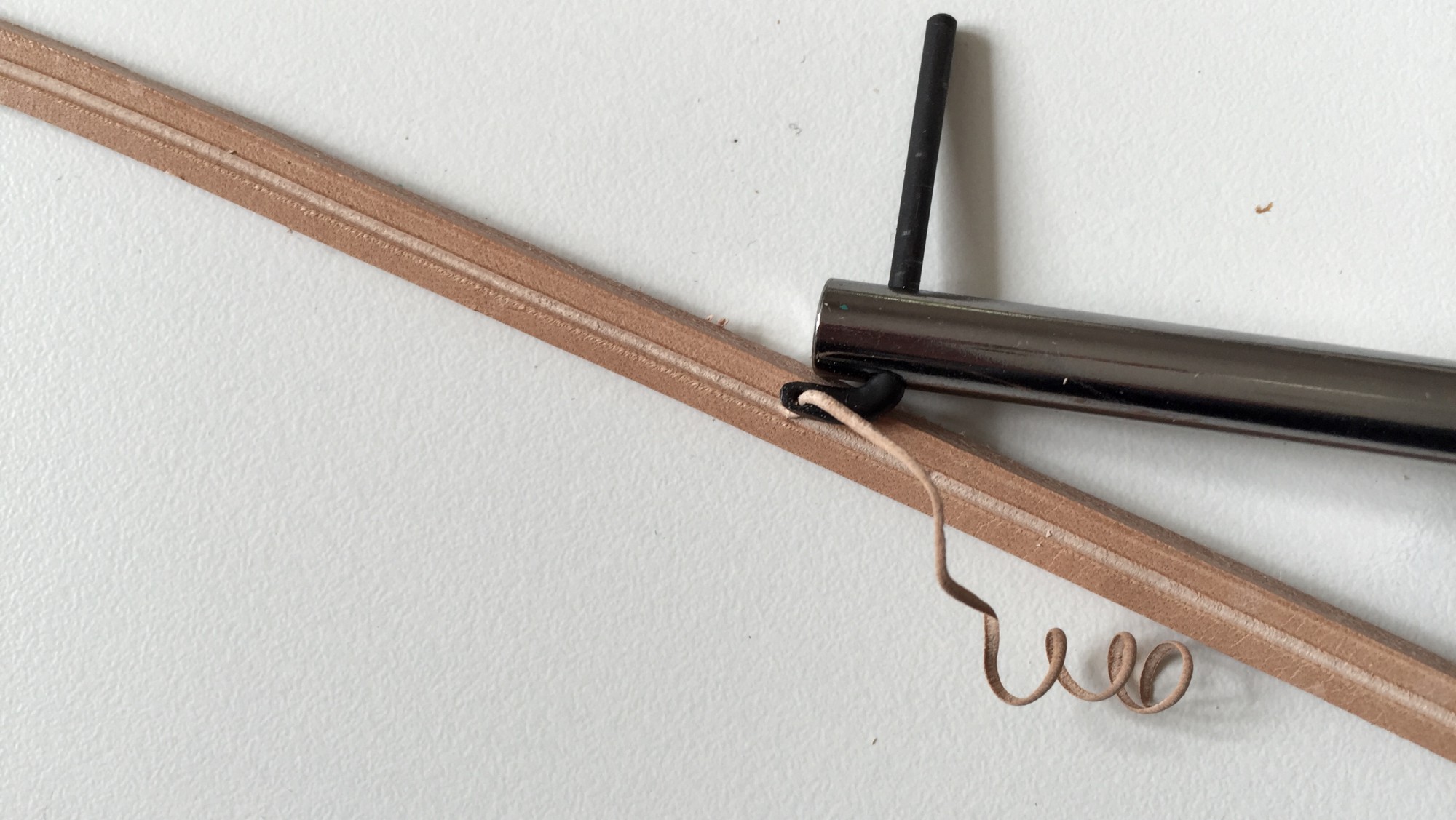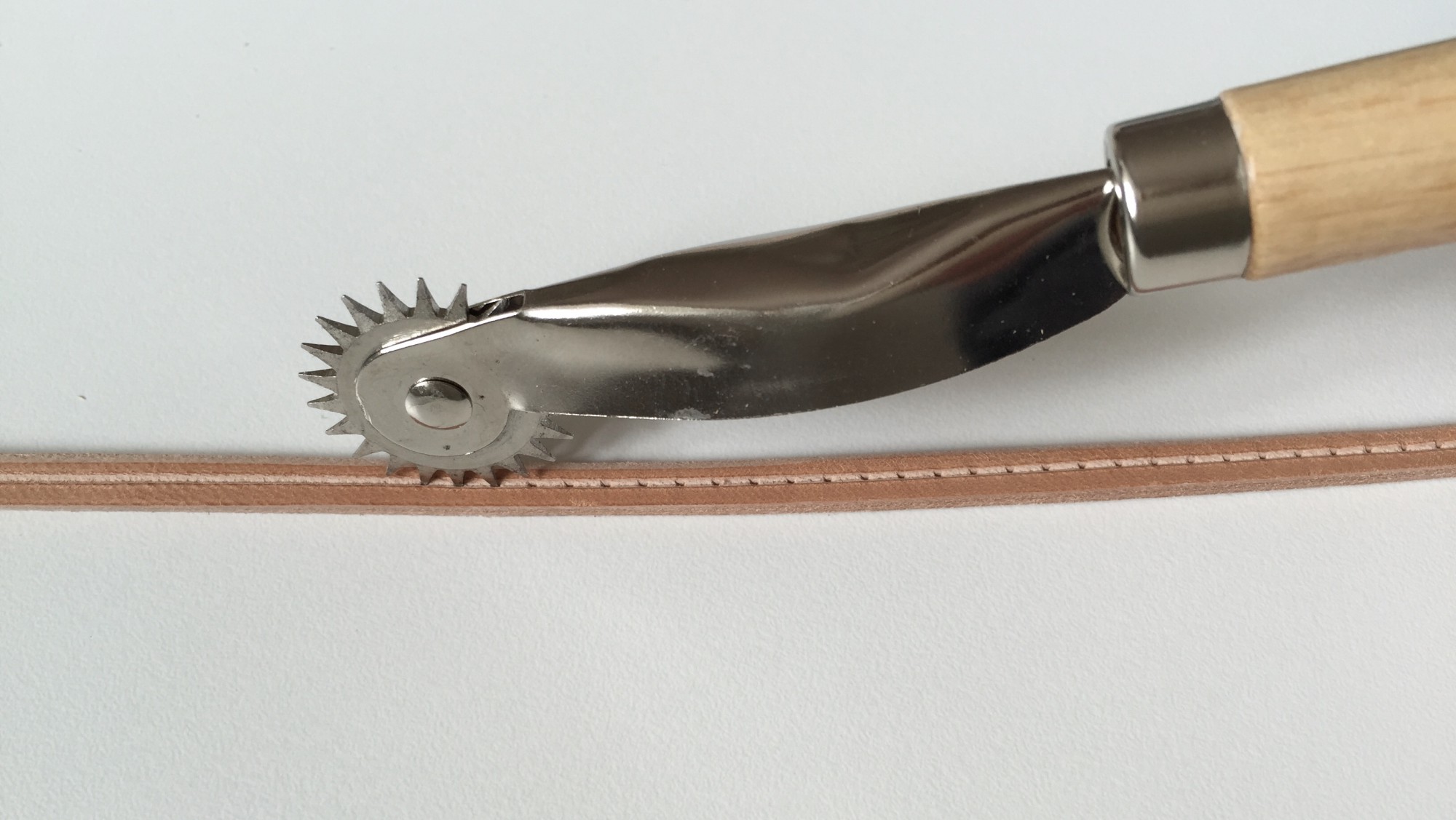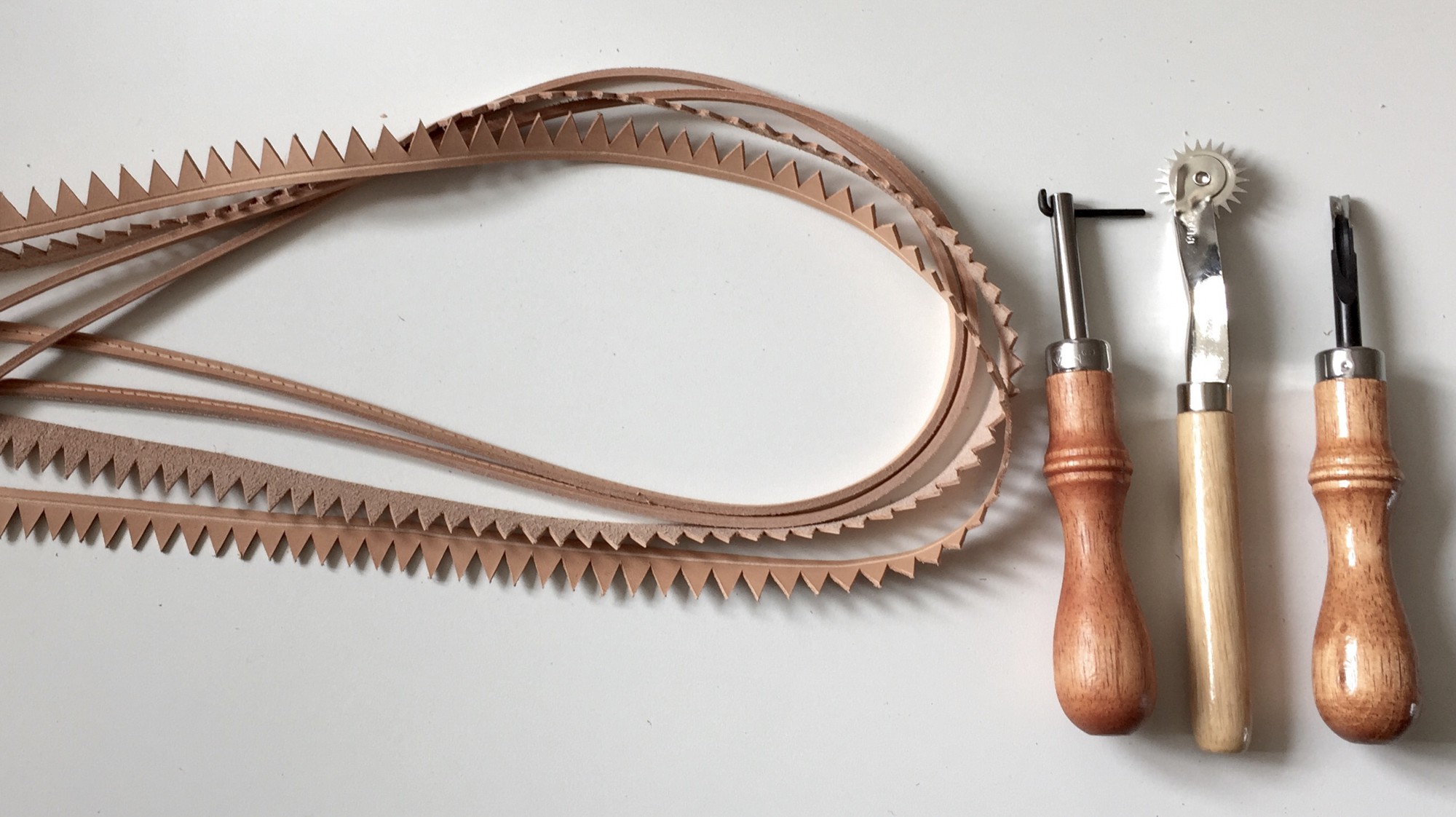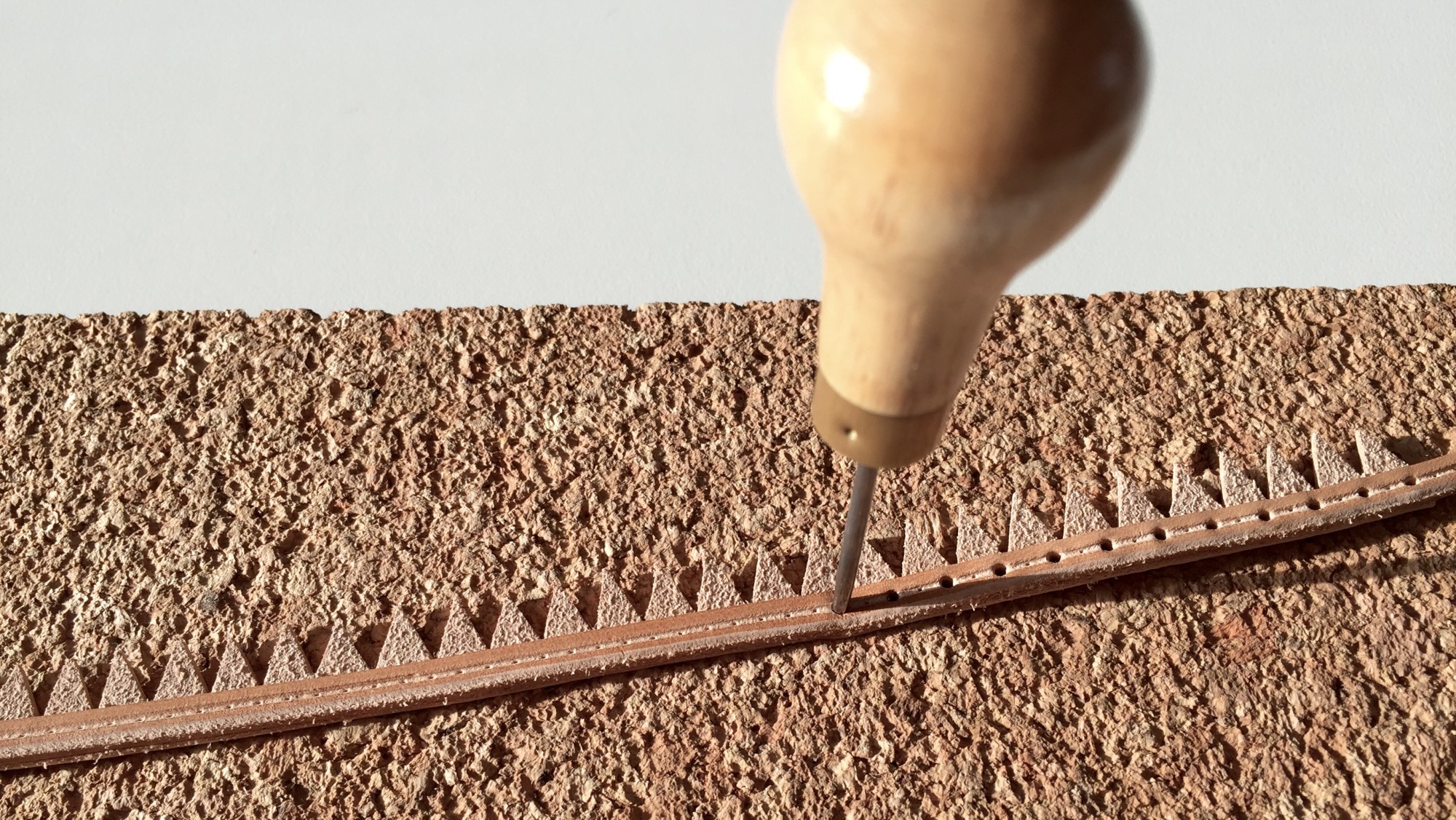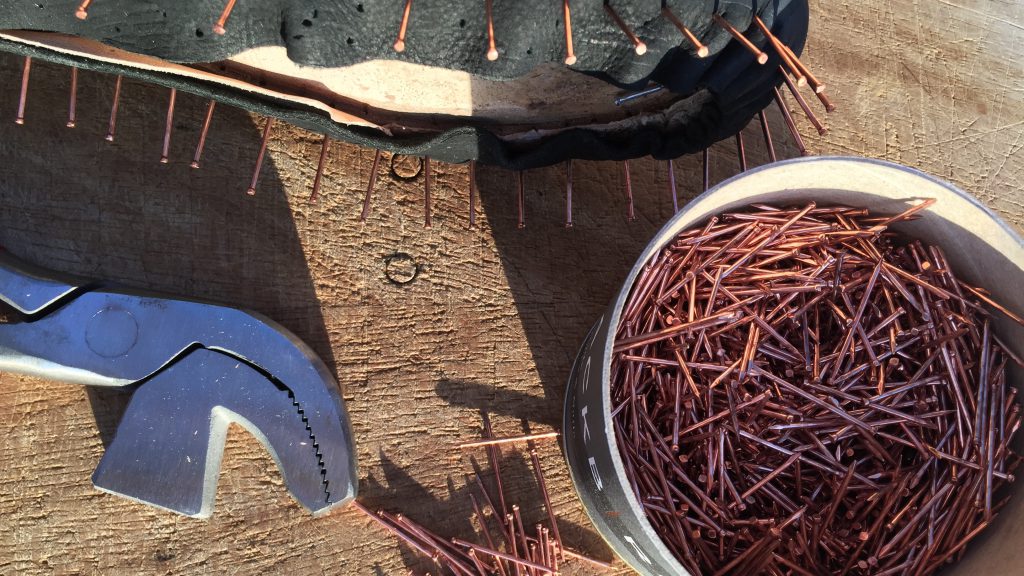 I have really been looking forward to lasting my boots and breaking in my new beautiful lasting nails. It might seem a bit geeky to obsess about the aesthetics of something as practical as nails, and actually it wasn’t until I saw these copper plated lasting nails on Instagram, I realized that I would not be able to live without fabulous nails. Blackbird is a series of products, specially develoved for hand shoemaking and other creative purposes. I have acquired a selection of their many different nails, in various metals and shapes, that I am just waiting to find a purpose for using. My first experience with the slender lasting nails is really positive. They are easy to work with as they have a good length without bending too easy. And did I mention how beautiful they look?
I have really been looking forward to lasting my boots and breaking in my new beautiful lasting nails. It might seem a bit geeky to obsess about the aesthetics of something as practical as nails, and actually it wasn’t until I saw these copper plated lasting nails on Instagram, I realized that I would not be able to live without fabulous nails. Blackbird is a series of products, specially develoved for hand shoemaking and other creative purposes. I have acquired a selection of their many different nails, in various metals and shapes, that I am just waiting to find a purpose for using. My first experience with the slender lasting nails is really positive. They are easy to work with as they have a good length without bending too easy. And did I mention how beautiful they look?
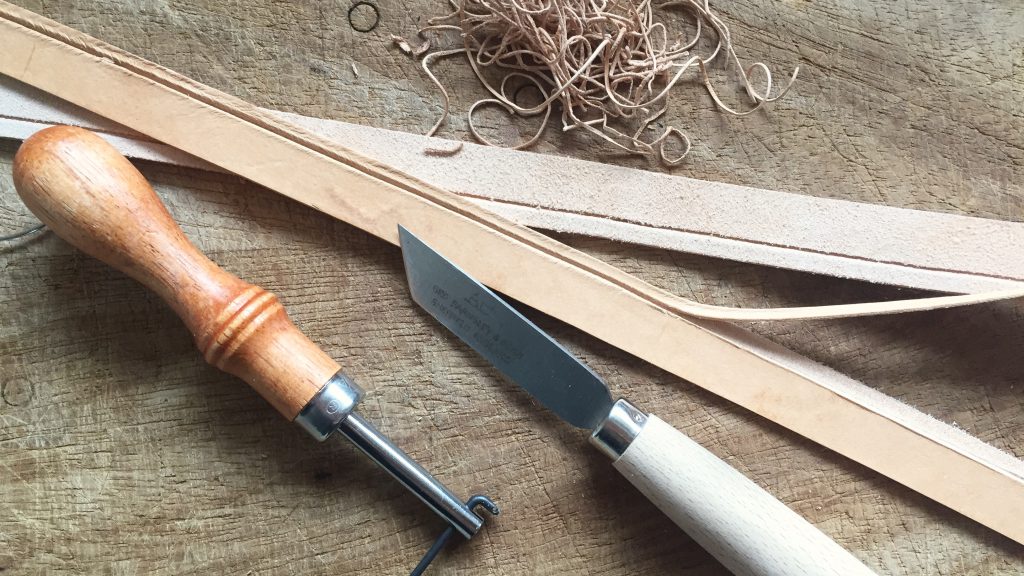 I prepare the welt by skiving the edge at one side and cutting a groove on the other. They are left to soak in water for a couple of hours to soften them.
I prepare the welt by skiving the edge at one side and cutting a groove on the other. They are left to soak in water for a couple of hours to soften them.
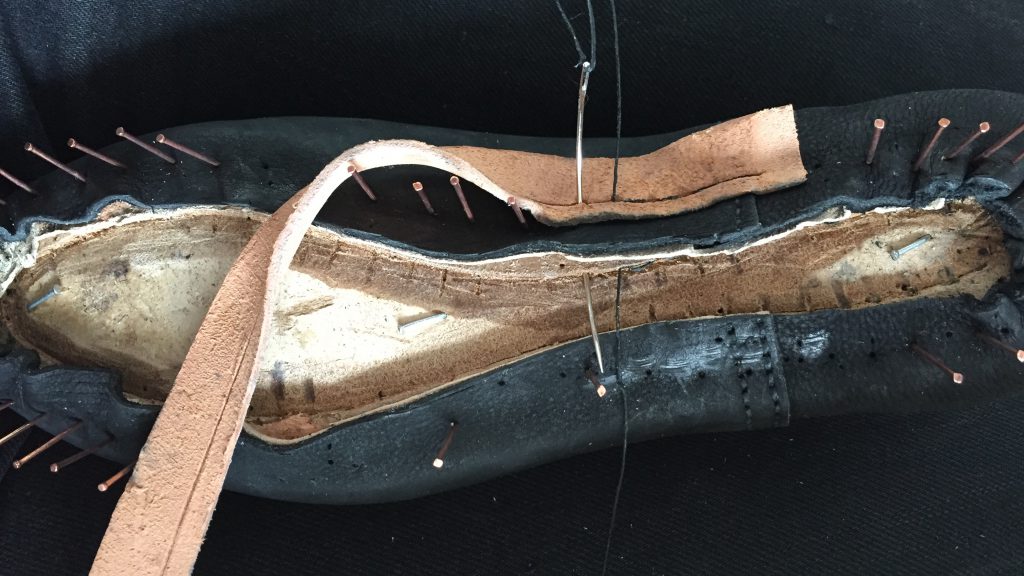 The holes in the holdfast are refreshed with a curved awl, at the same time making a hole in the upper and the welt. All parts are sewn together using two curved needles.
The holes in the holdfast are refreshed with a curved awl, at the same time making a hole in the upper and the welt. All parts are sewn together using two curved needles.
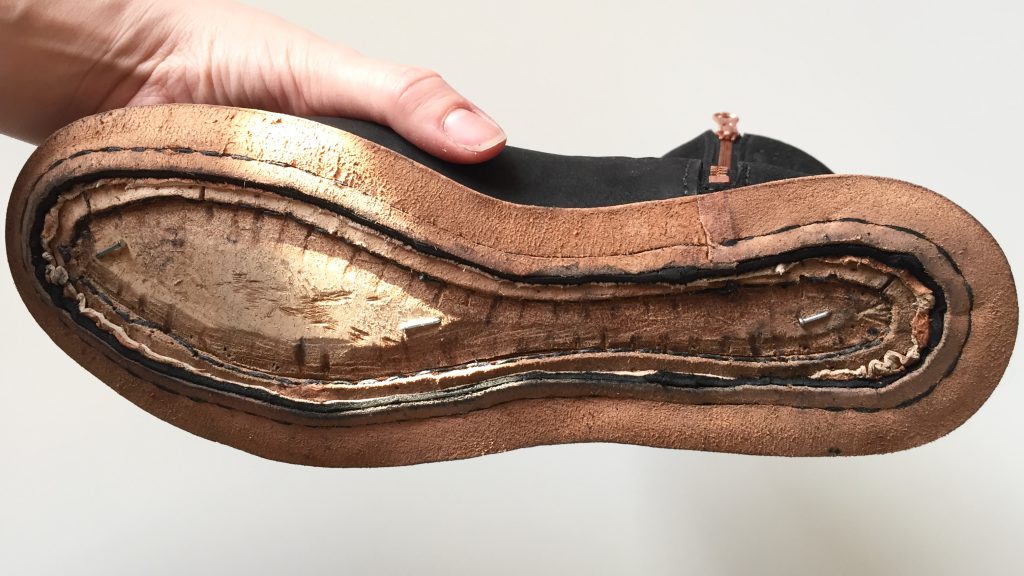 Finished welting. It was a tough job, but I am very satisfied. I kept getting better along the way, so I think my second boot will be a little bit easier.
Finished welting. It was a tough job, but I am very satisfied. I kept getting better along the way, so I think my second boot will be a little bit easier.

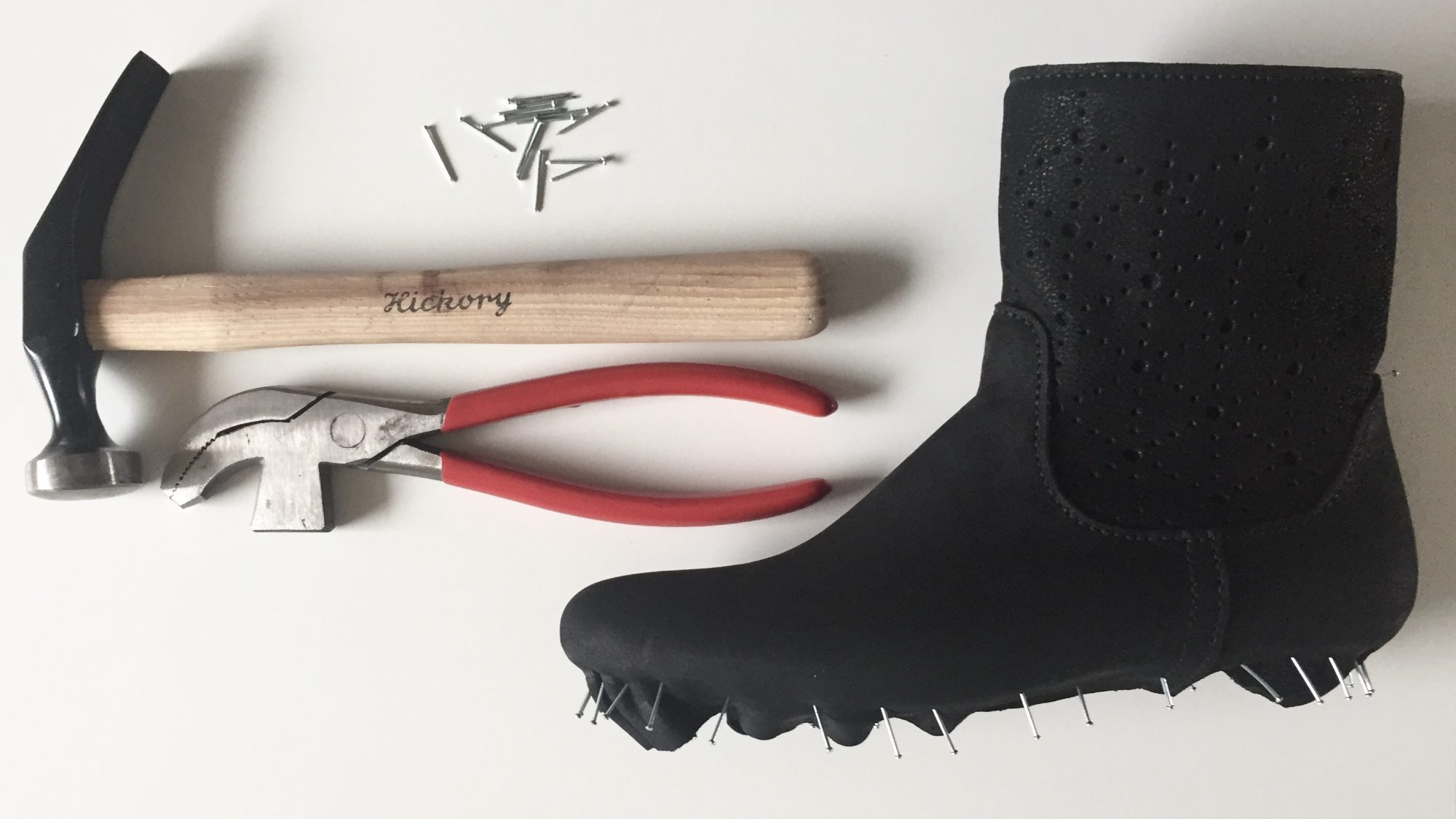 Now that the uppers are sewn and the insoles prepared, it is time for the first lasting. The upper is moistened to make the leather more flexible, and using the shoemakers pliers, it is pulled in shape over the instep, heel and toe. This will be the first and roughest of the lastings, so the nails are placed a little bit further apart than I intend to do on the final. The boots are then left to dry until next day.
Now that the uppers are sewn and the insoles prepared, it is time for the first lasting. The upper is moistened to make the leather more flexible, and using the shoemakers pliers, it is pulled in shape over the instep, heel and toe. This will be the first and roughest of the lastings, so the nails are placed a little bit further apart than I intend to do on the final. The boots are then left to dry until next day.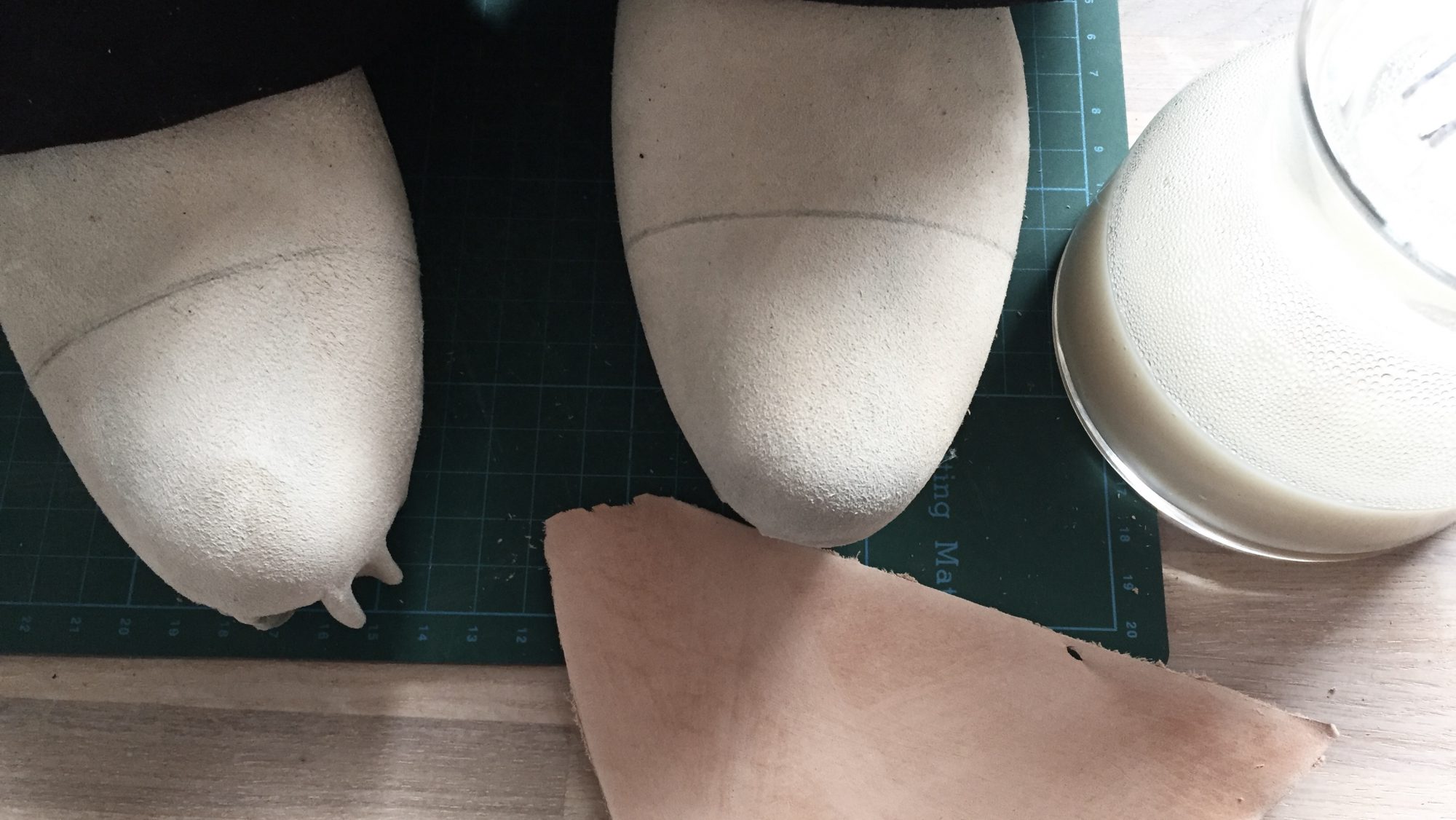
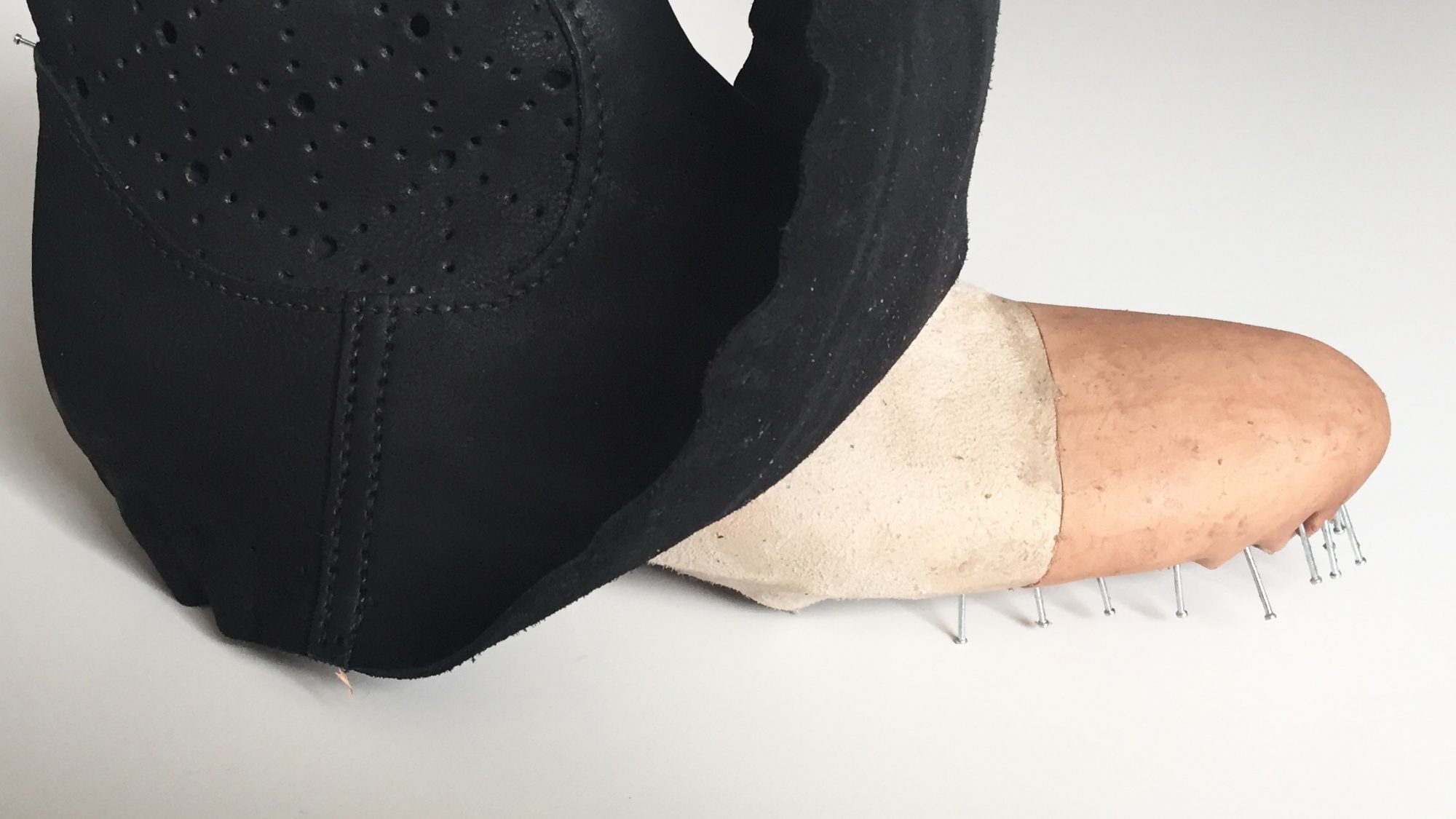
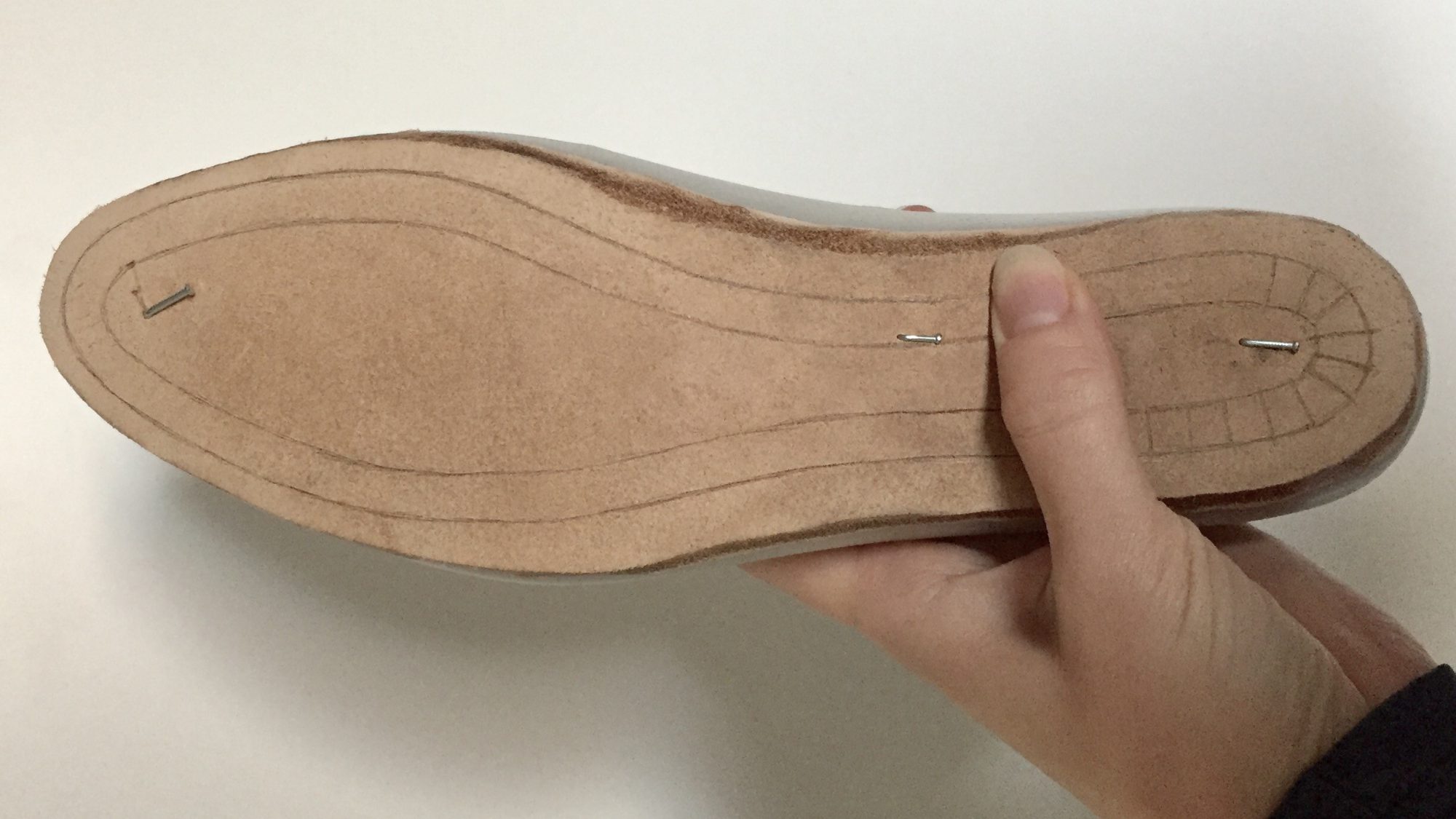 My first pair of shoes were made with a cemented rand tape and sole, which was a fairly big challenge, not having received any kind of introduction to shoemaking. This time I will obviously push my own limits once again, trying out the much more durable welted construction. A template is sketched onto the bottom of the insole. This is cut out as shown in the picture below, leaving an edge for sewing on the upper.
My first pair of shoes were made with a cemented rand tape and sole, which was a fairly big challenge, not having received any kind of introduction to shoemaking. This time I will obviously push my own limits once again, trying out the much more durable welted construction. A template is sketched onto the bottom of the insole. This is cut out as shown in the picture below, leaving an edge for sewing on the upper.